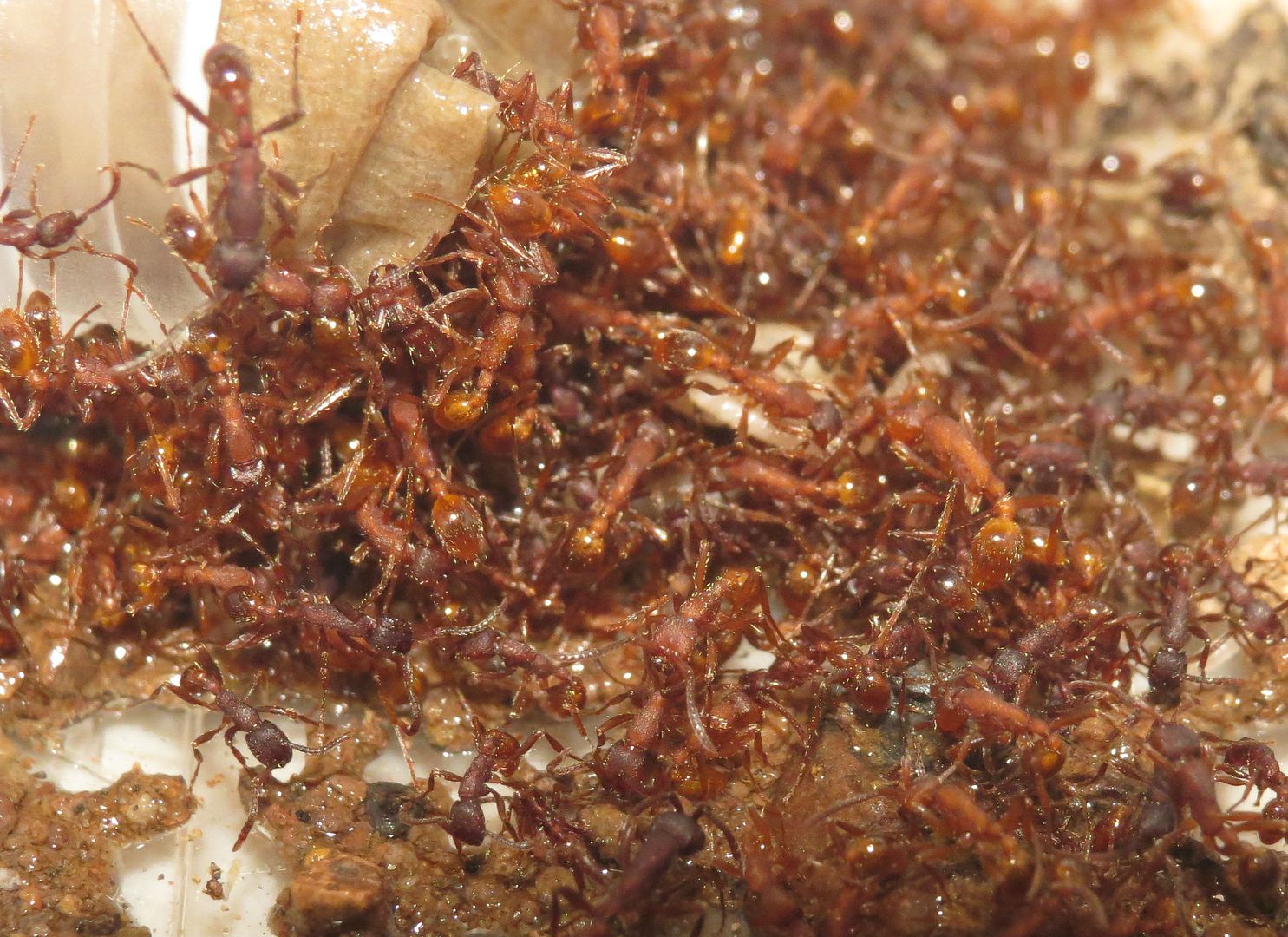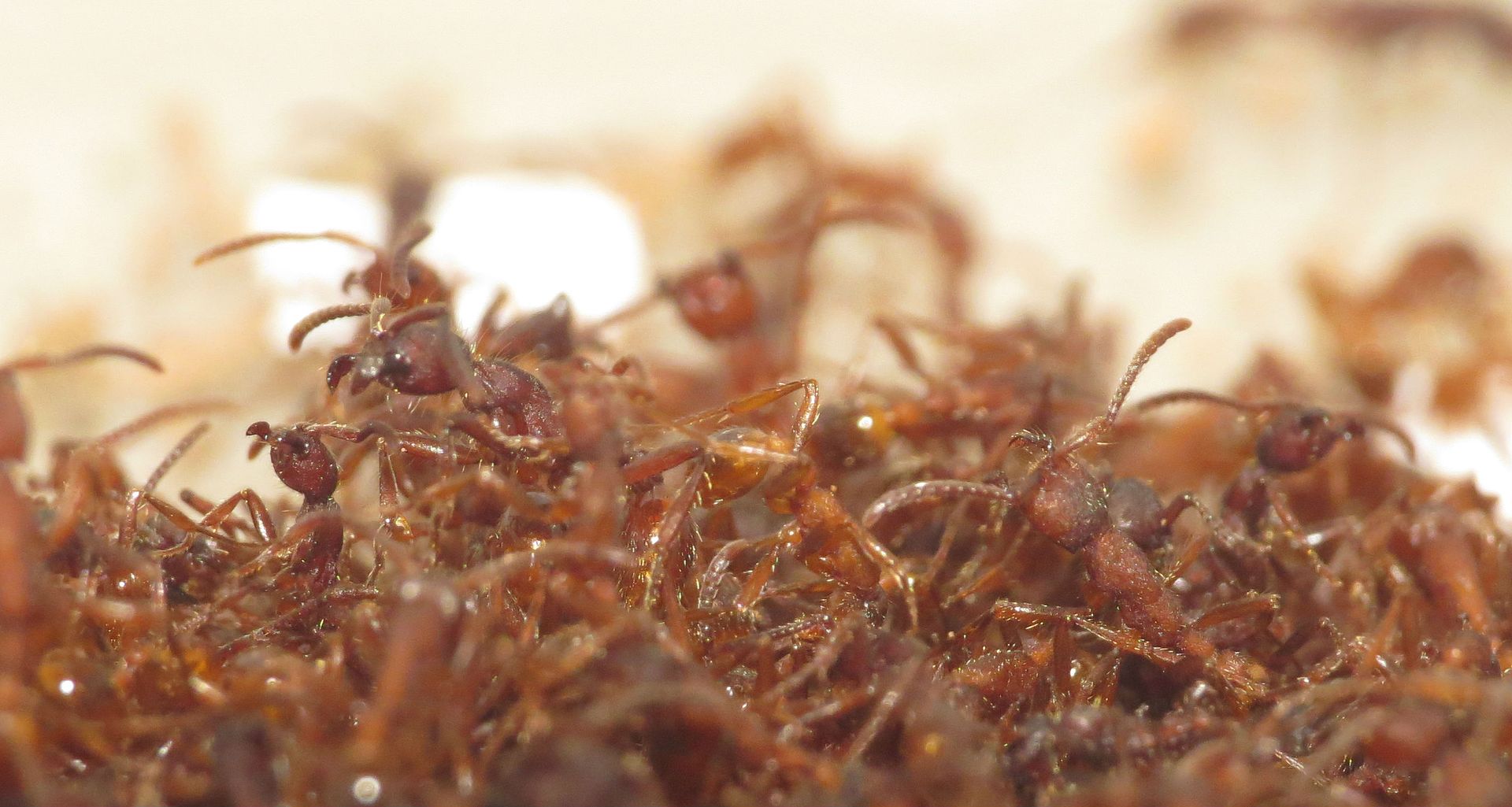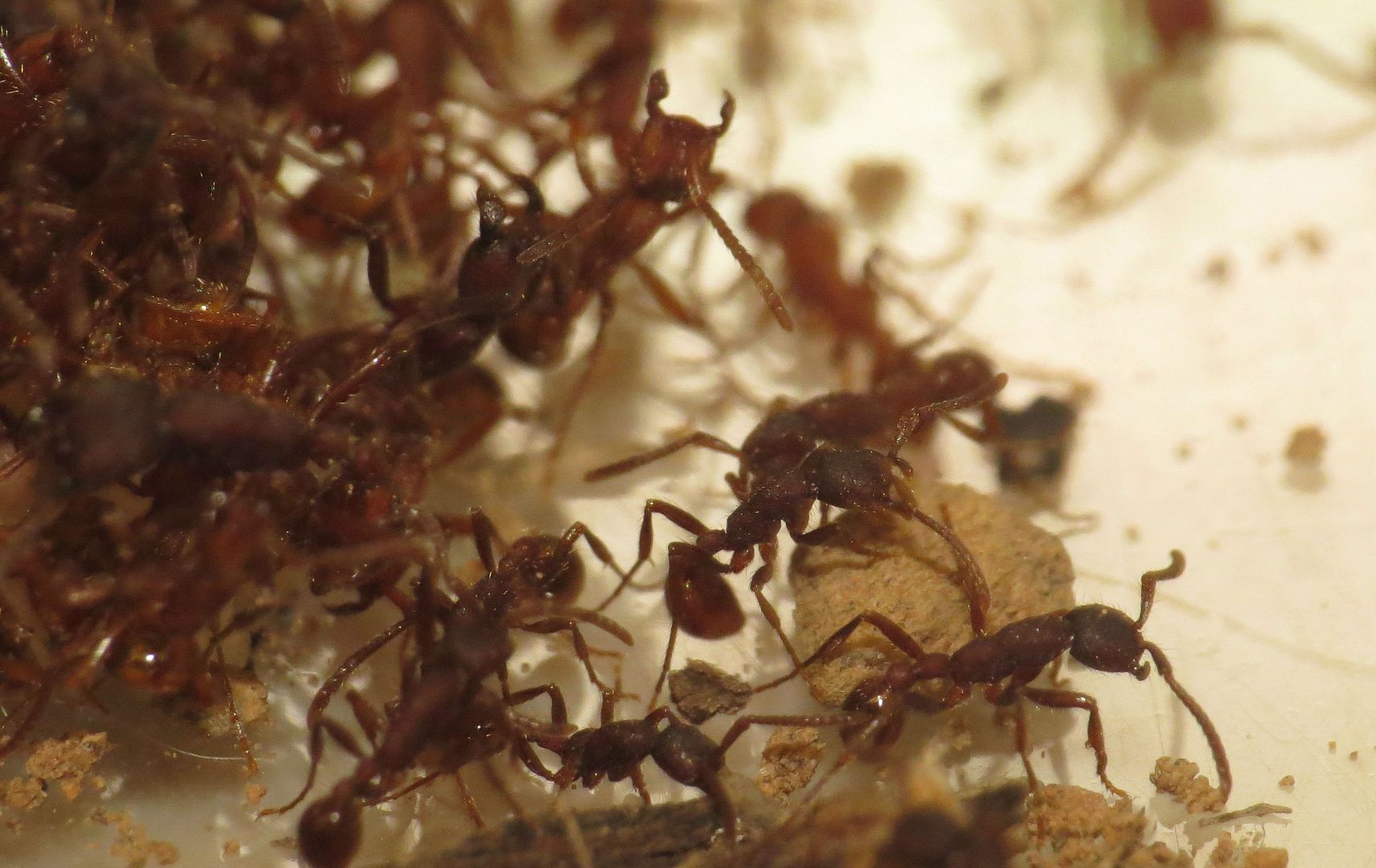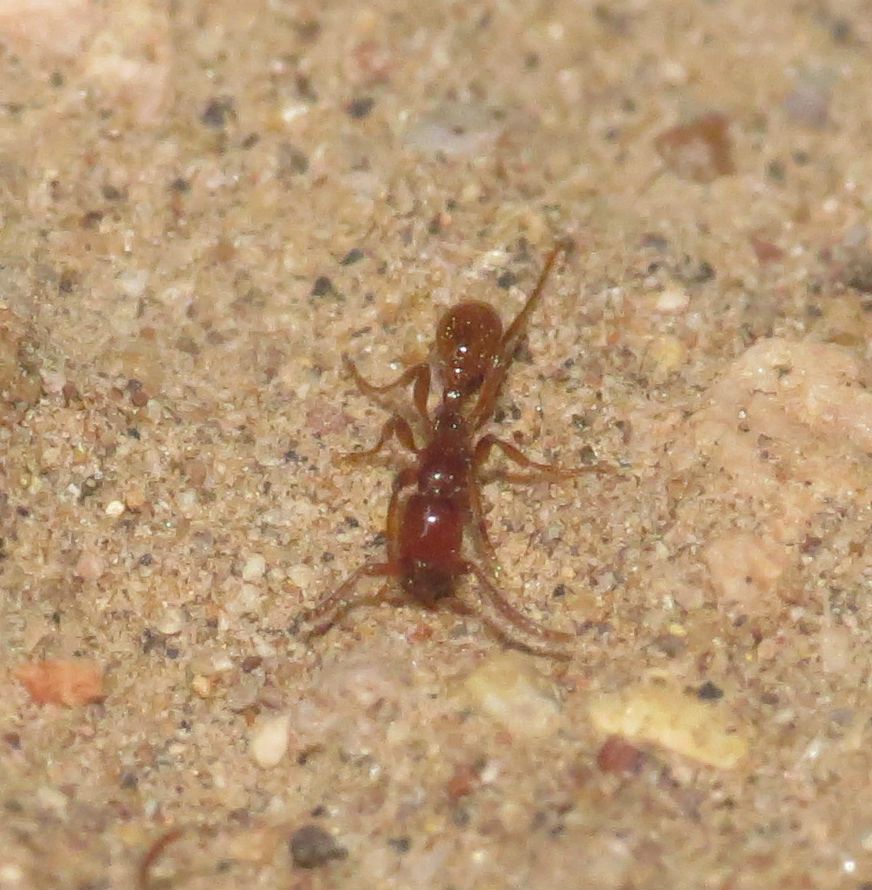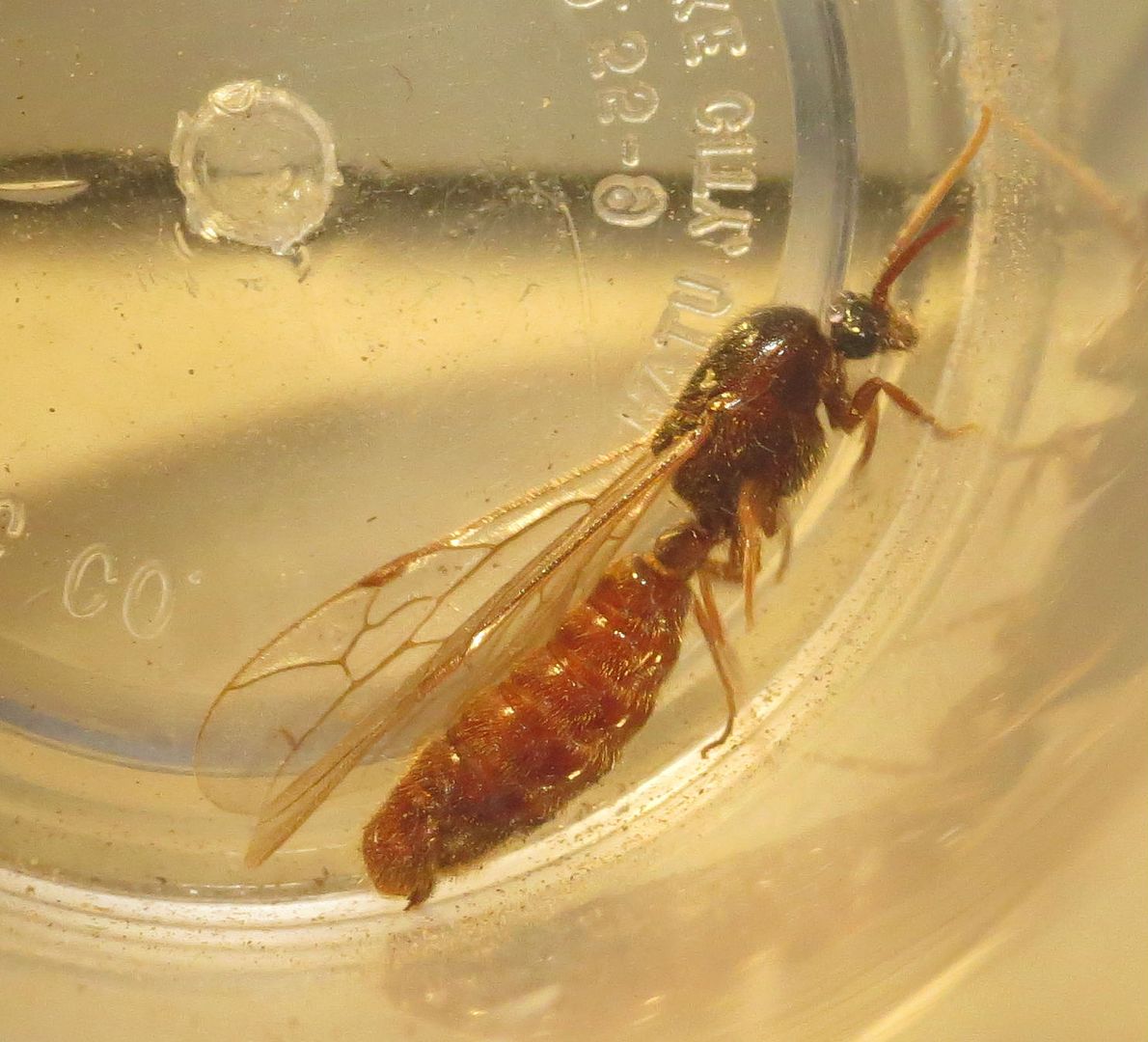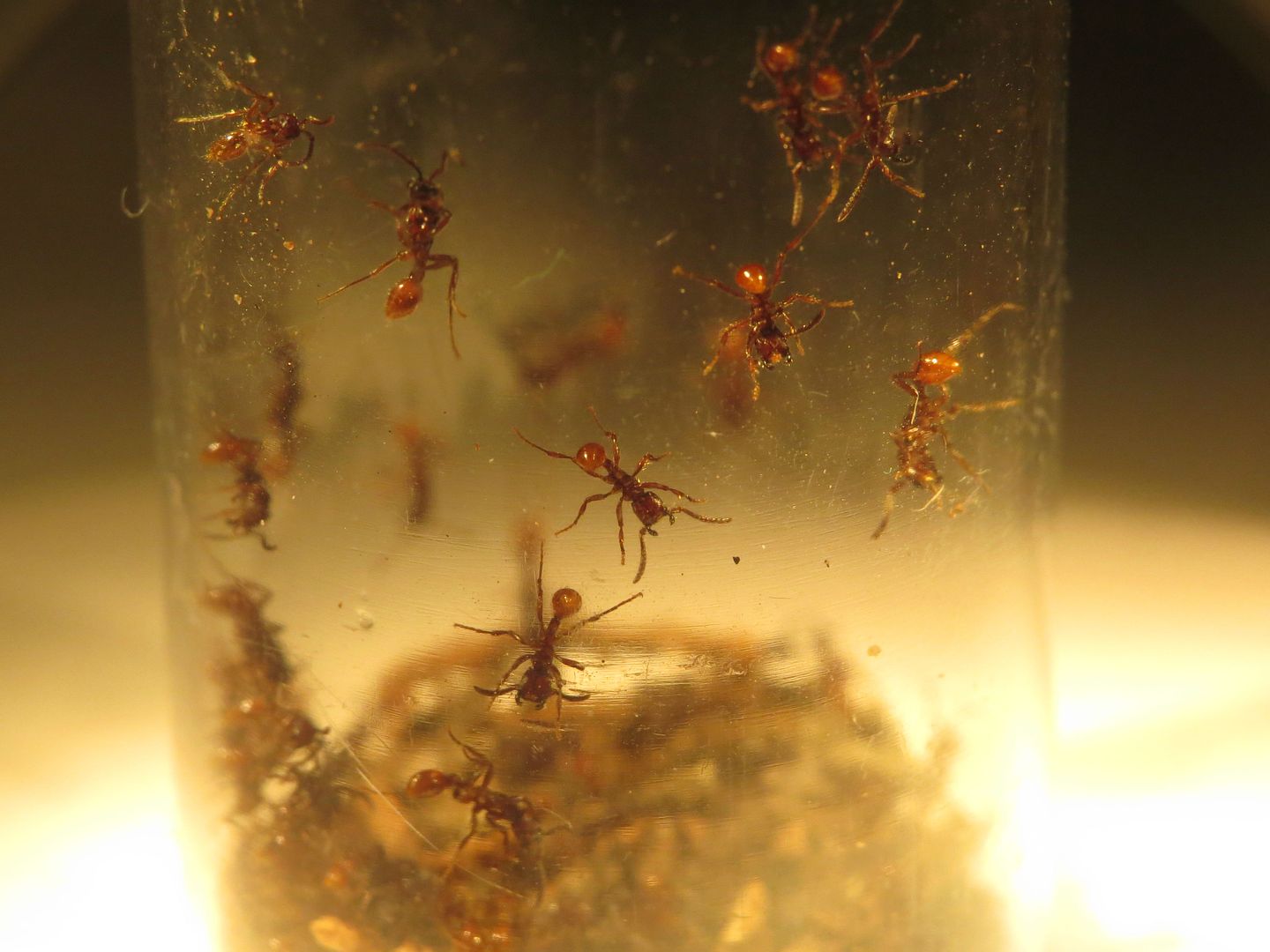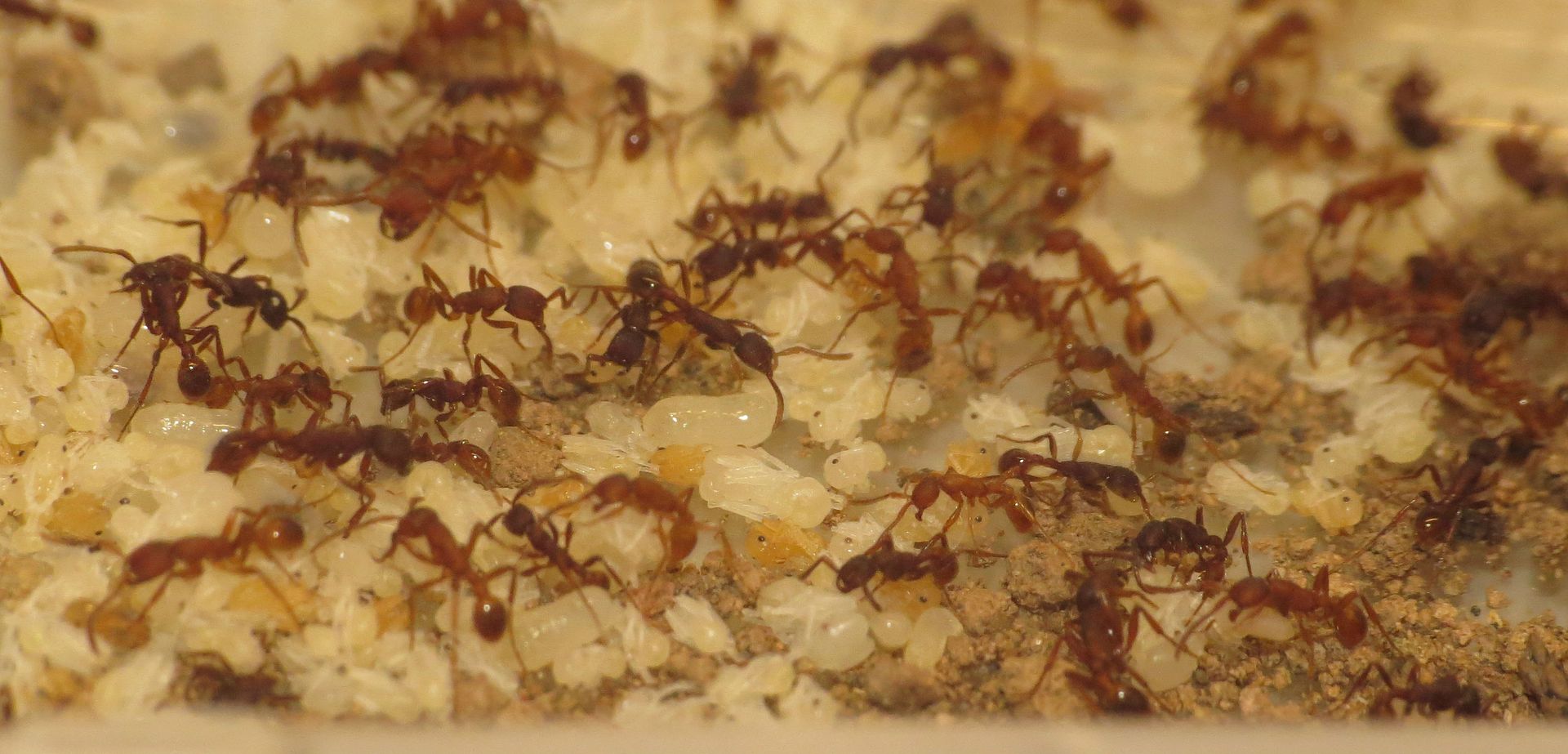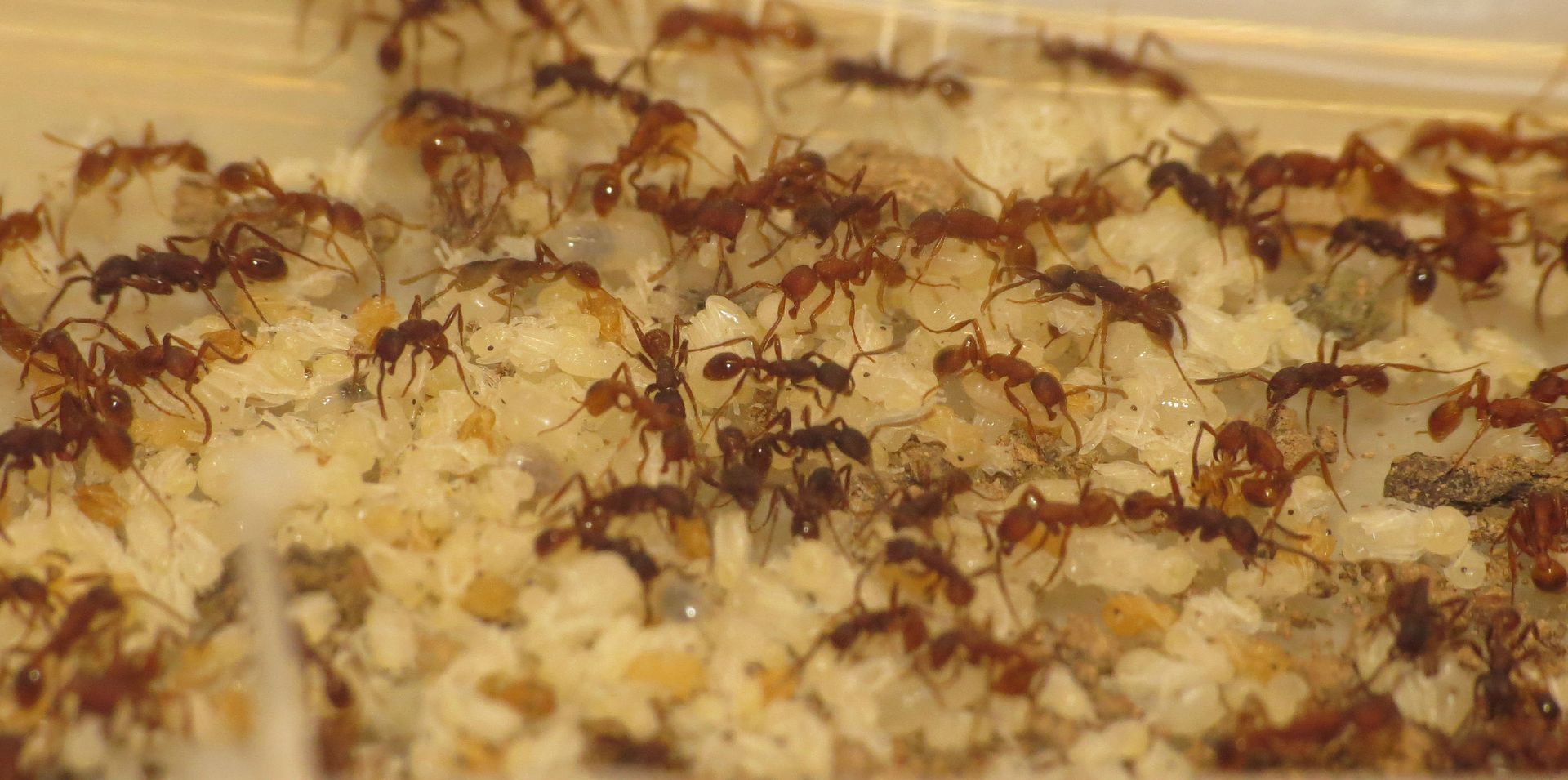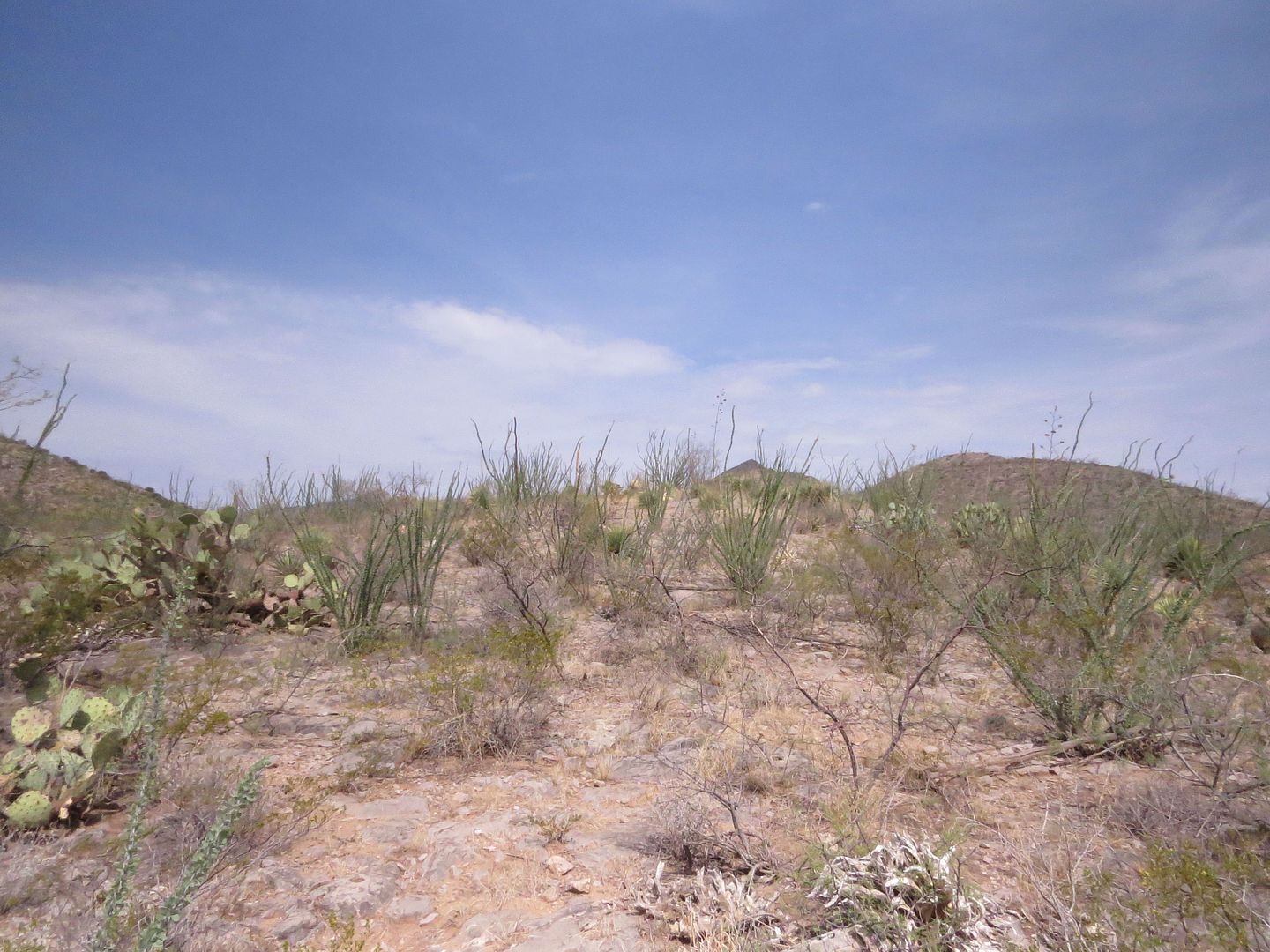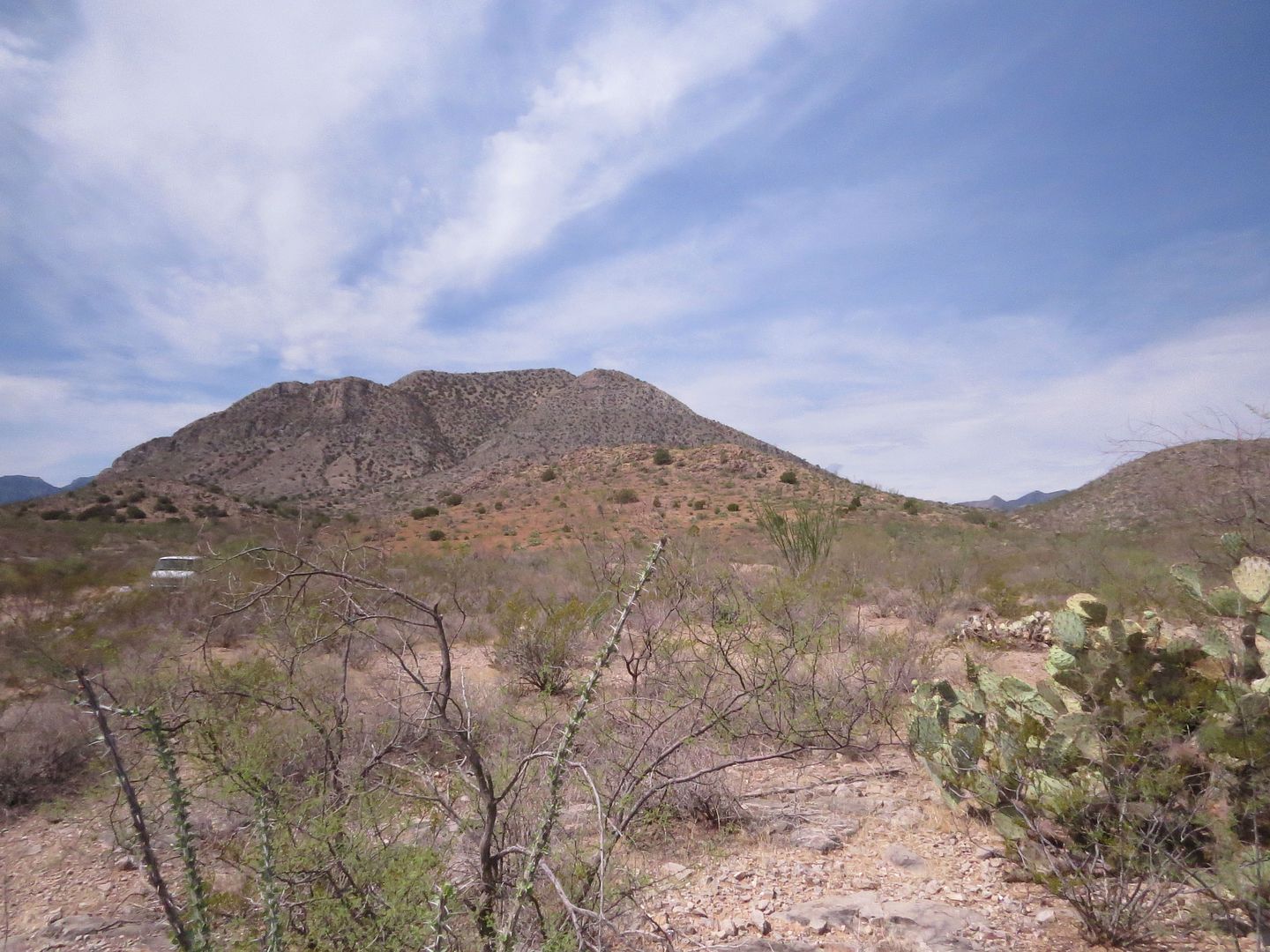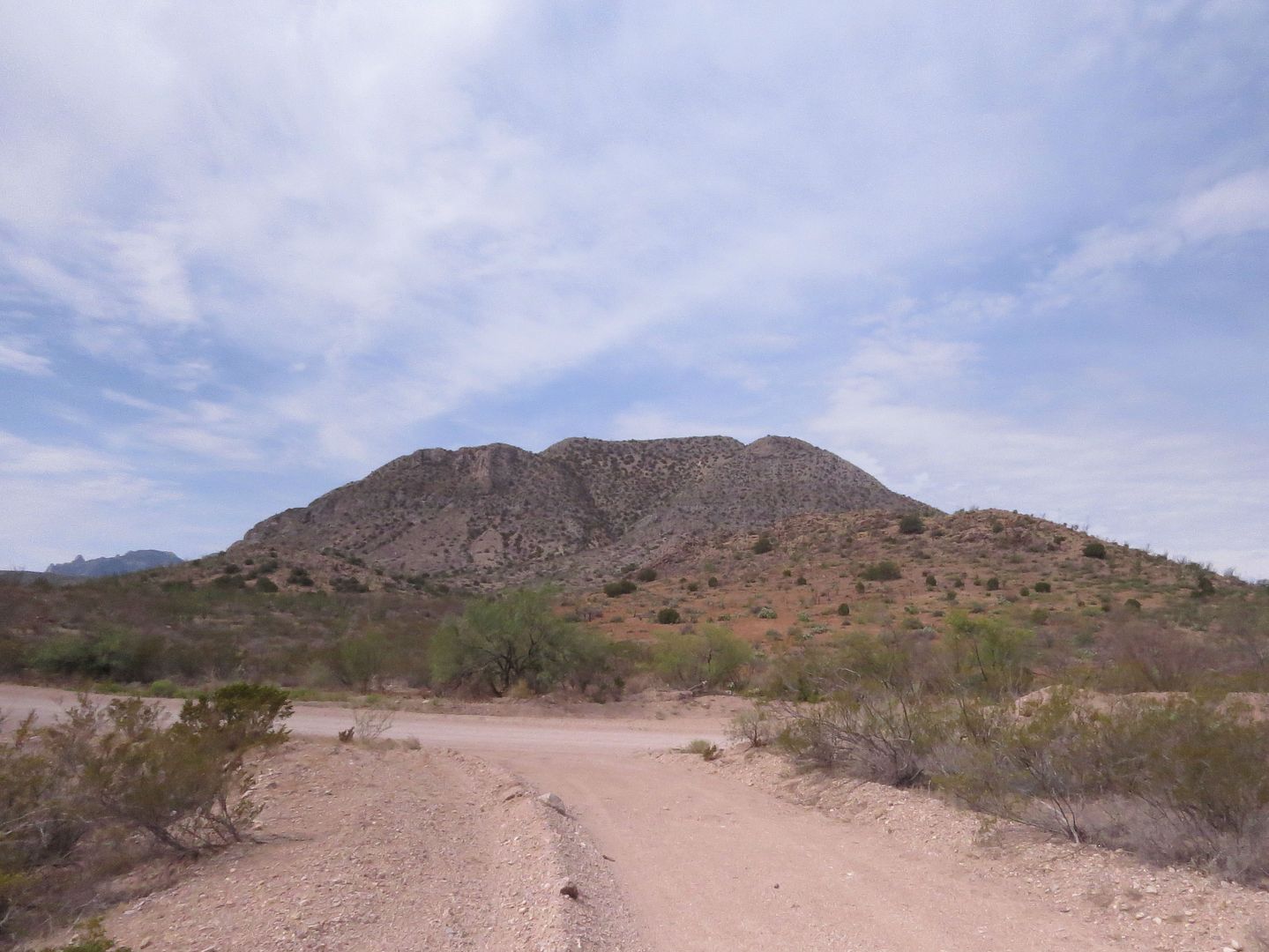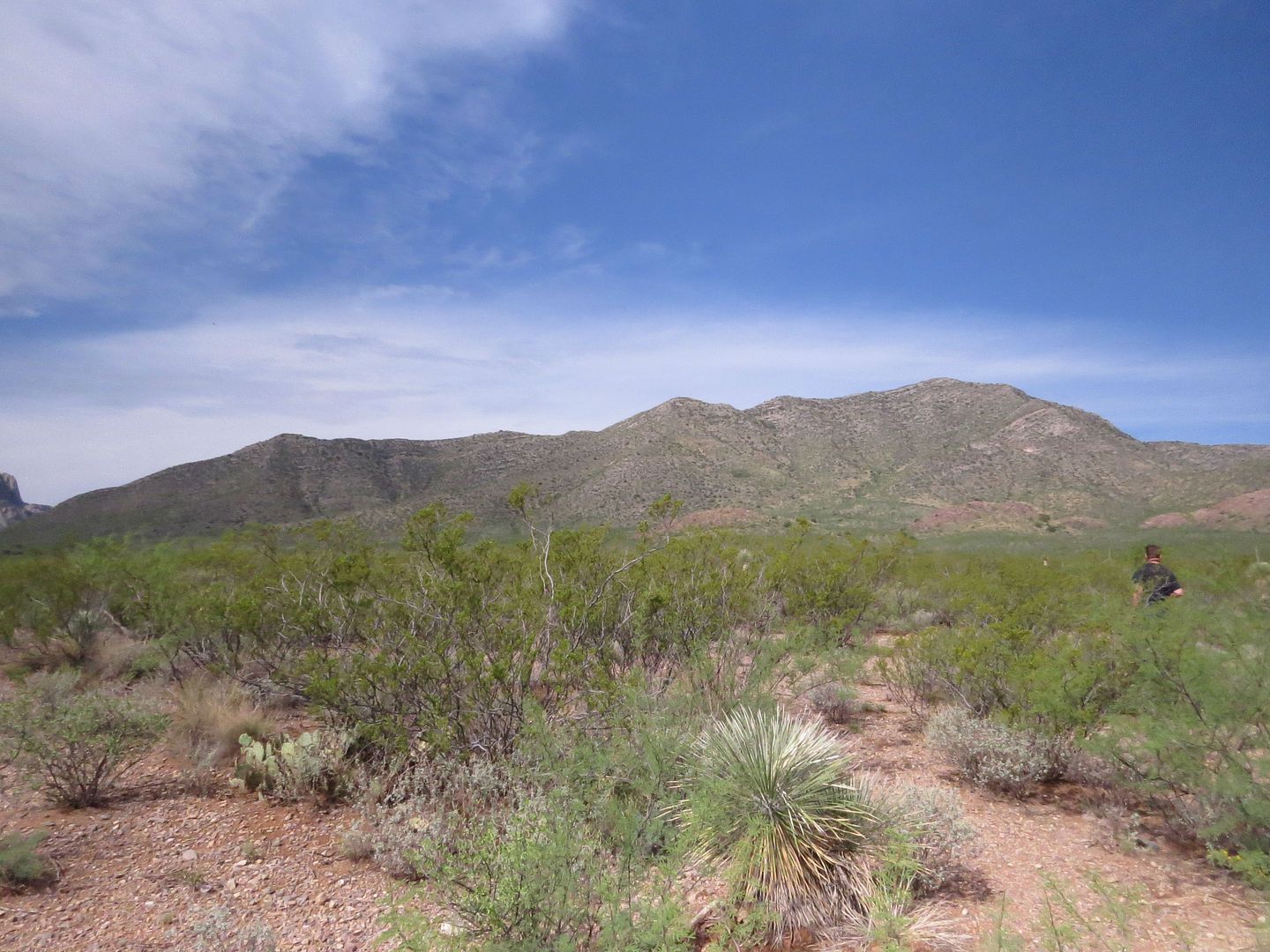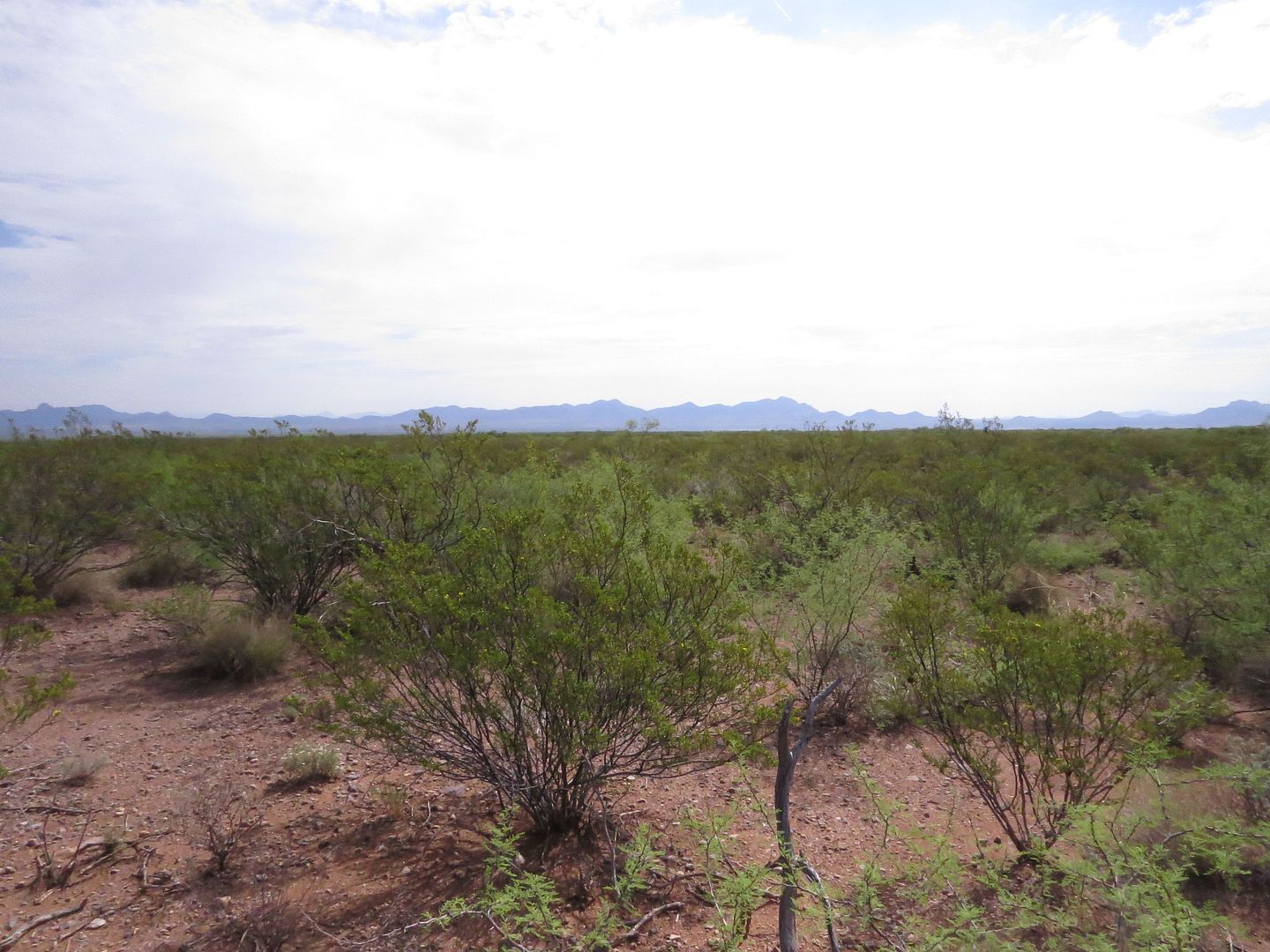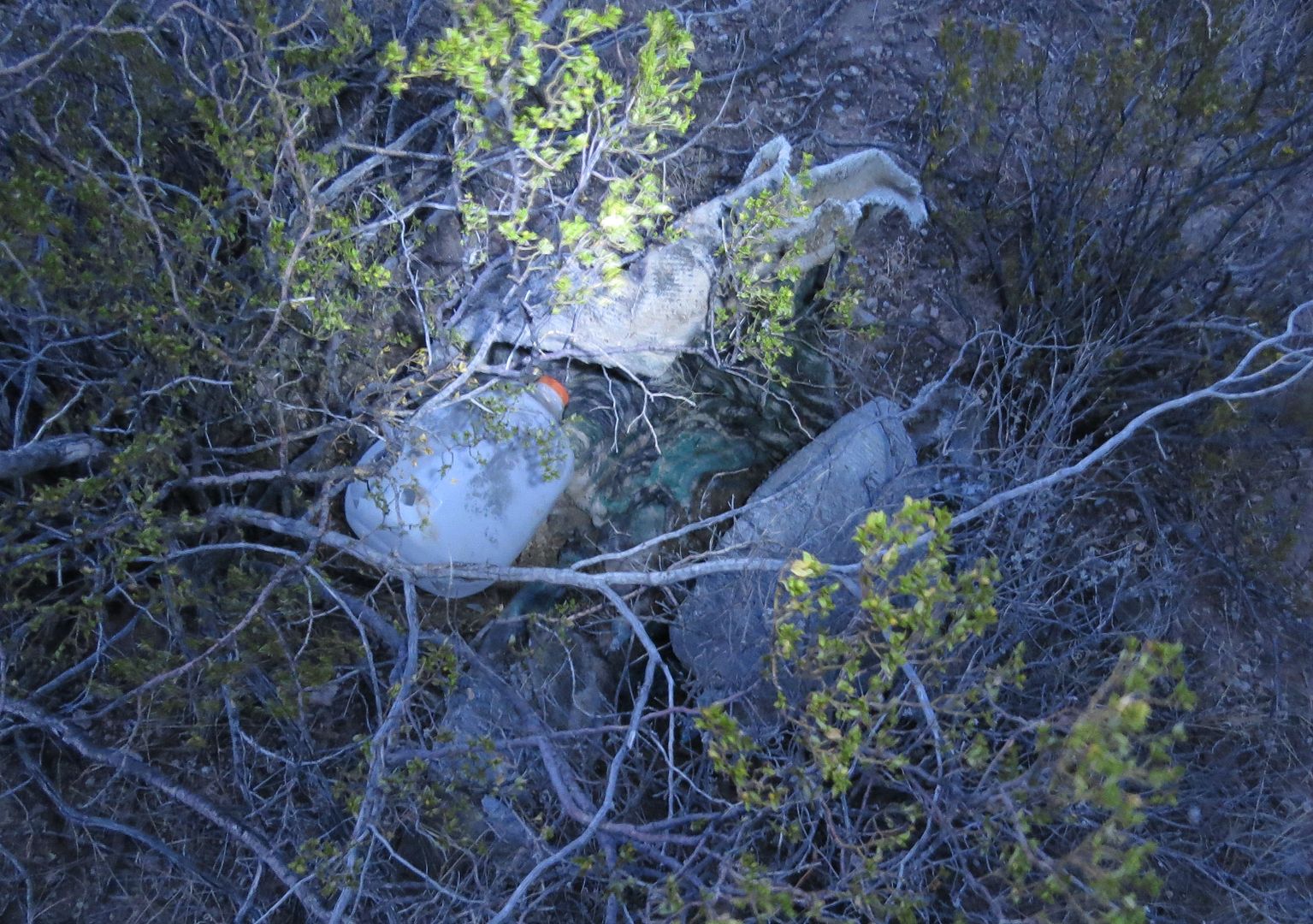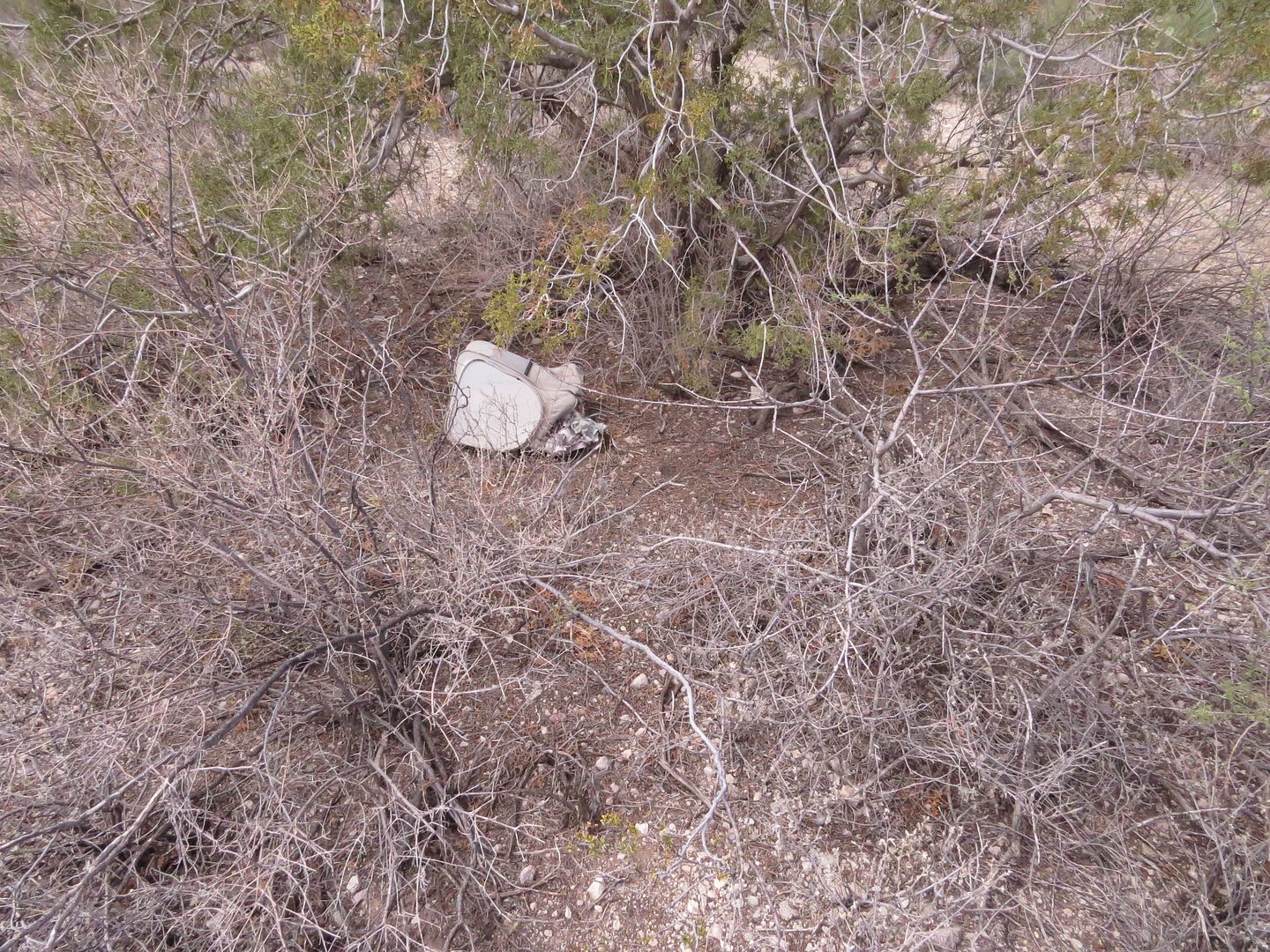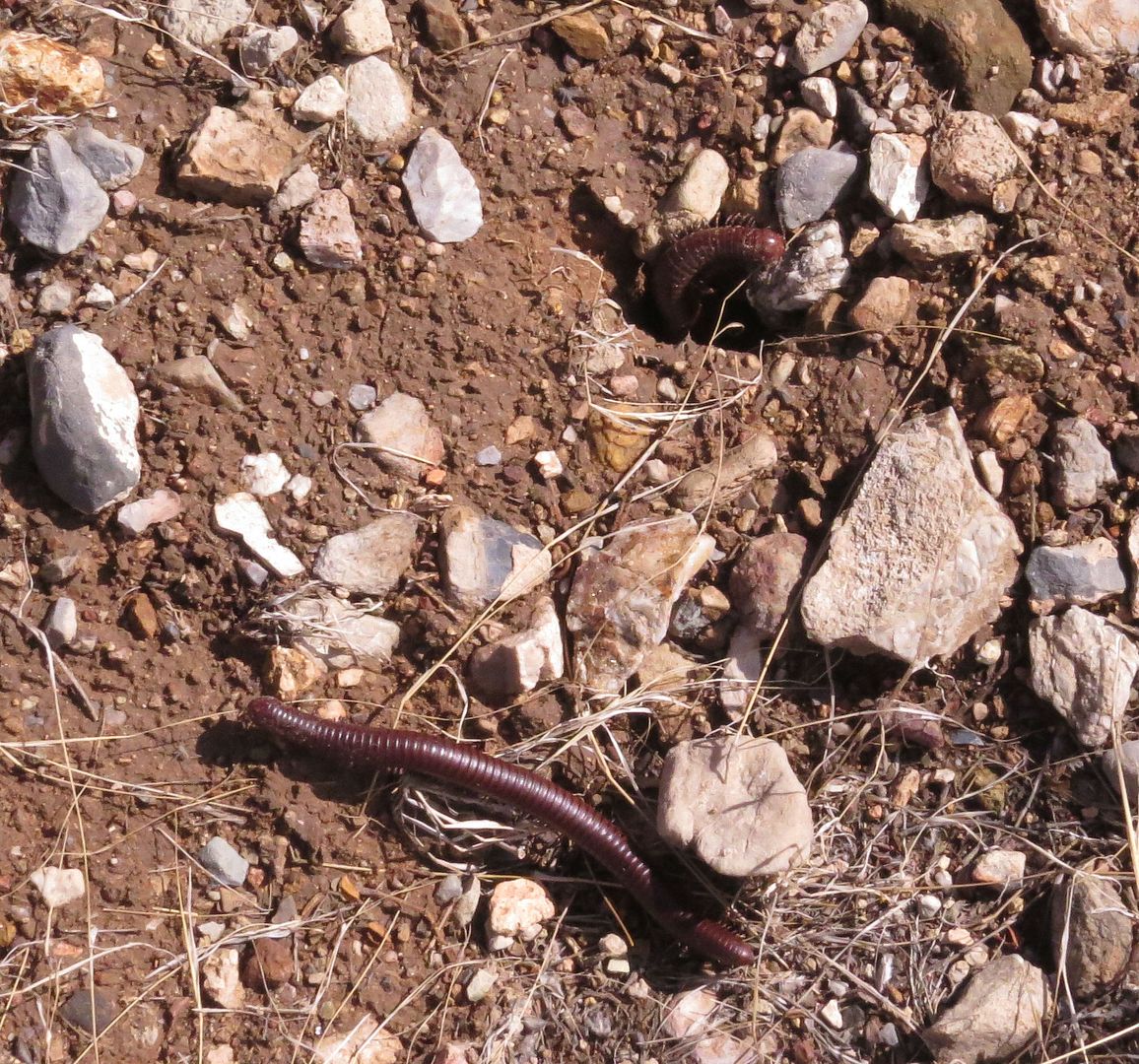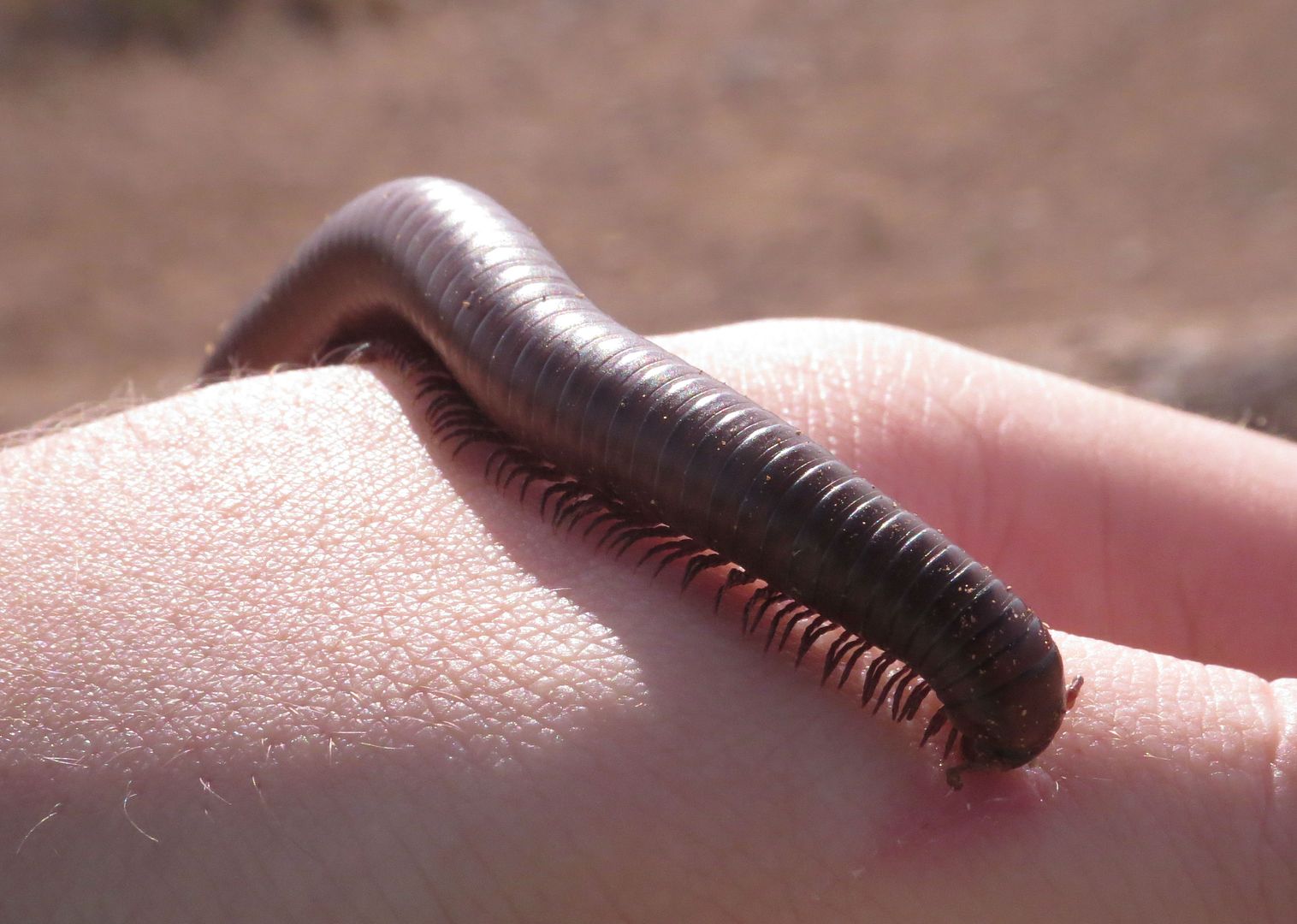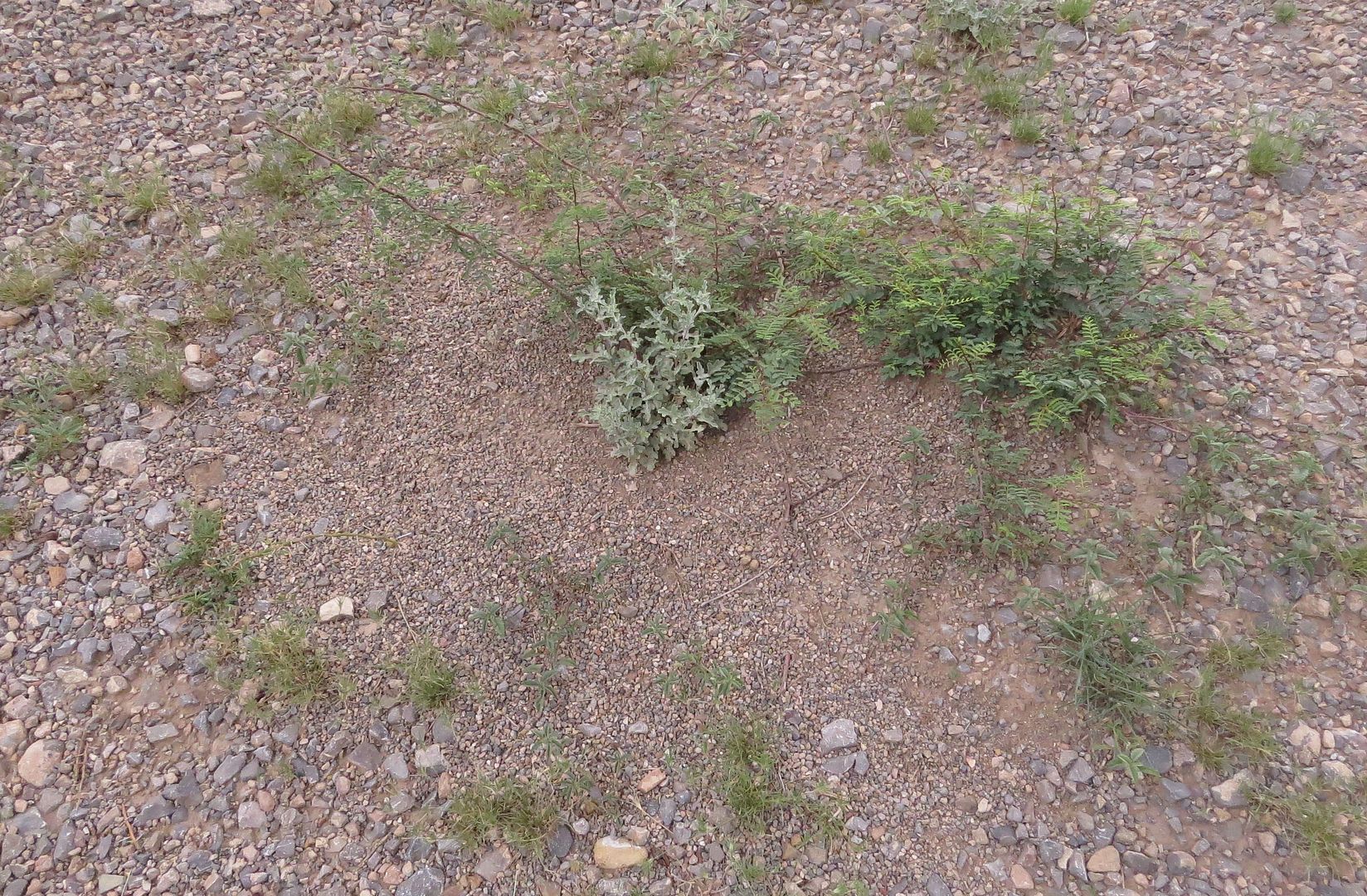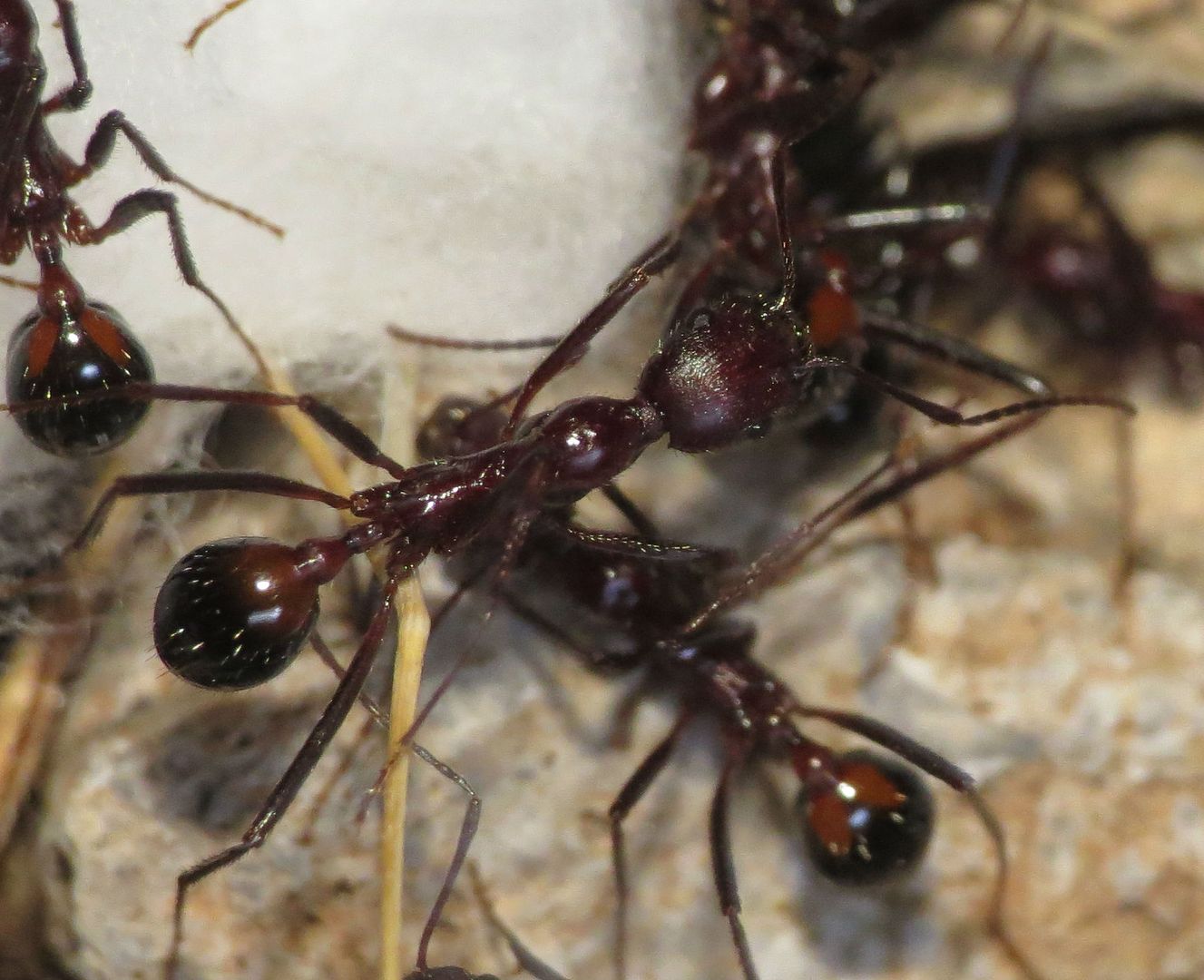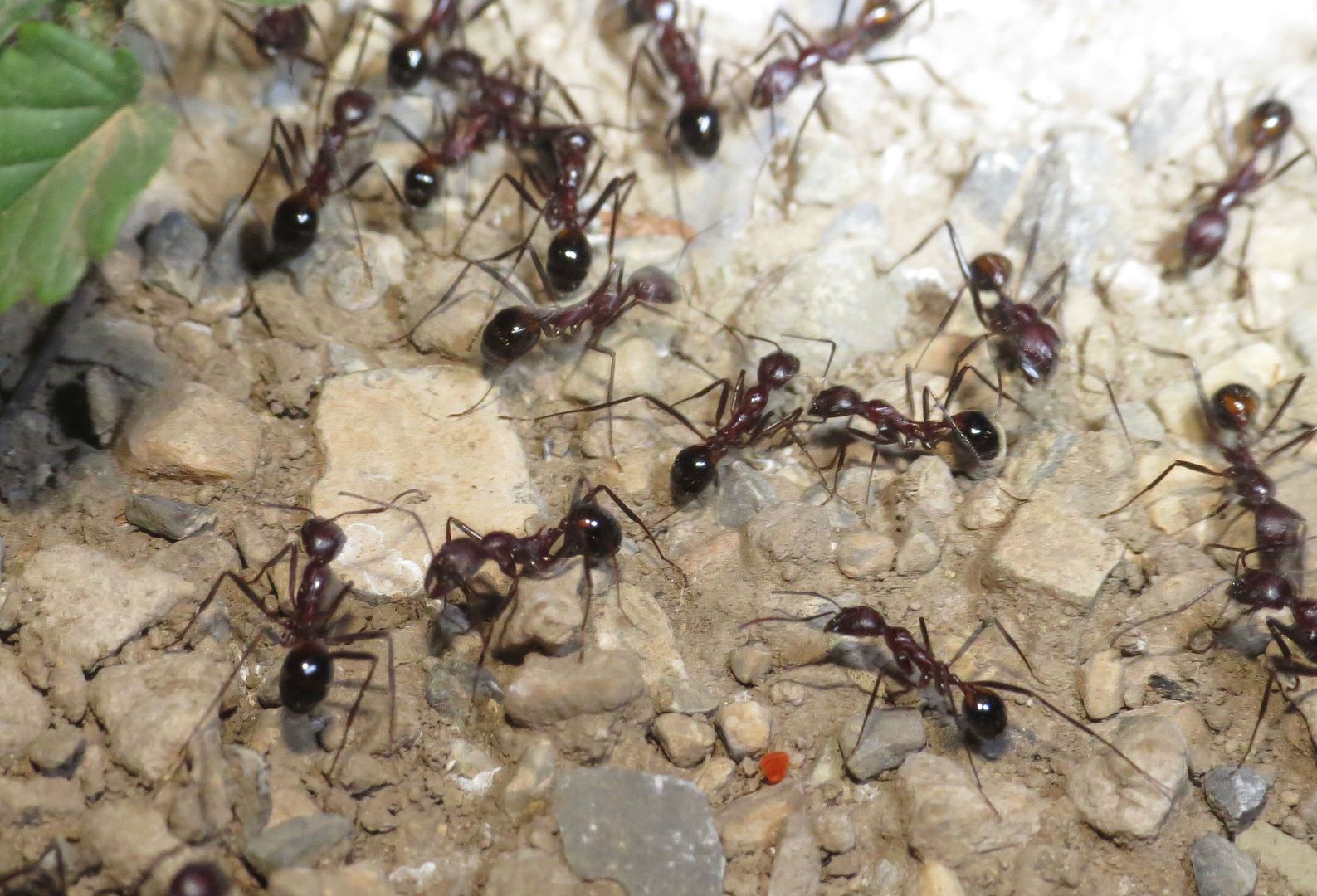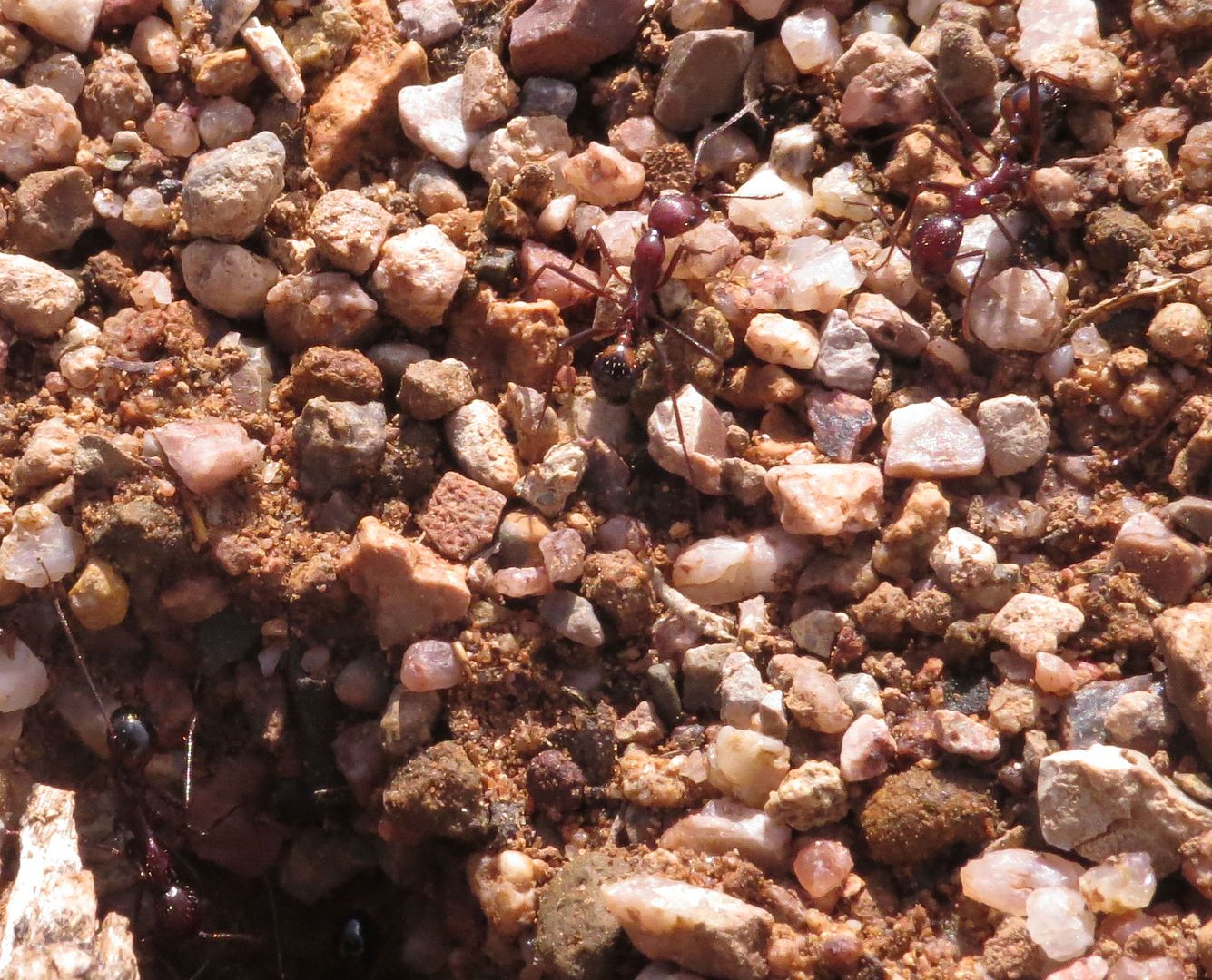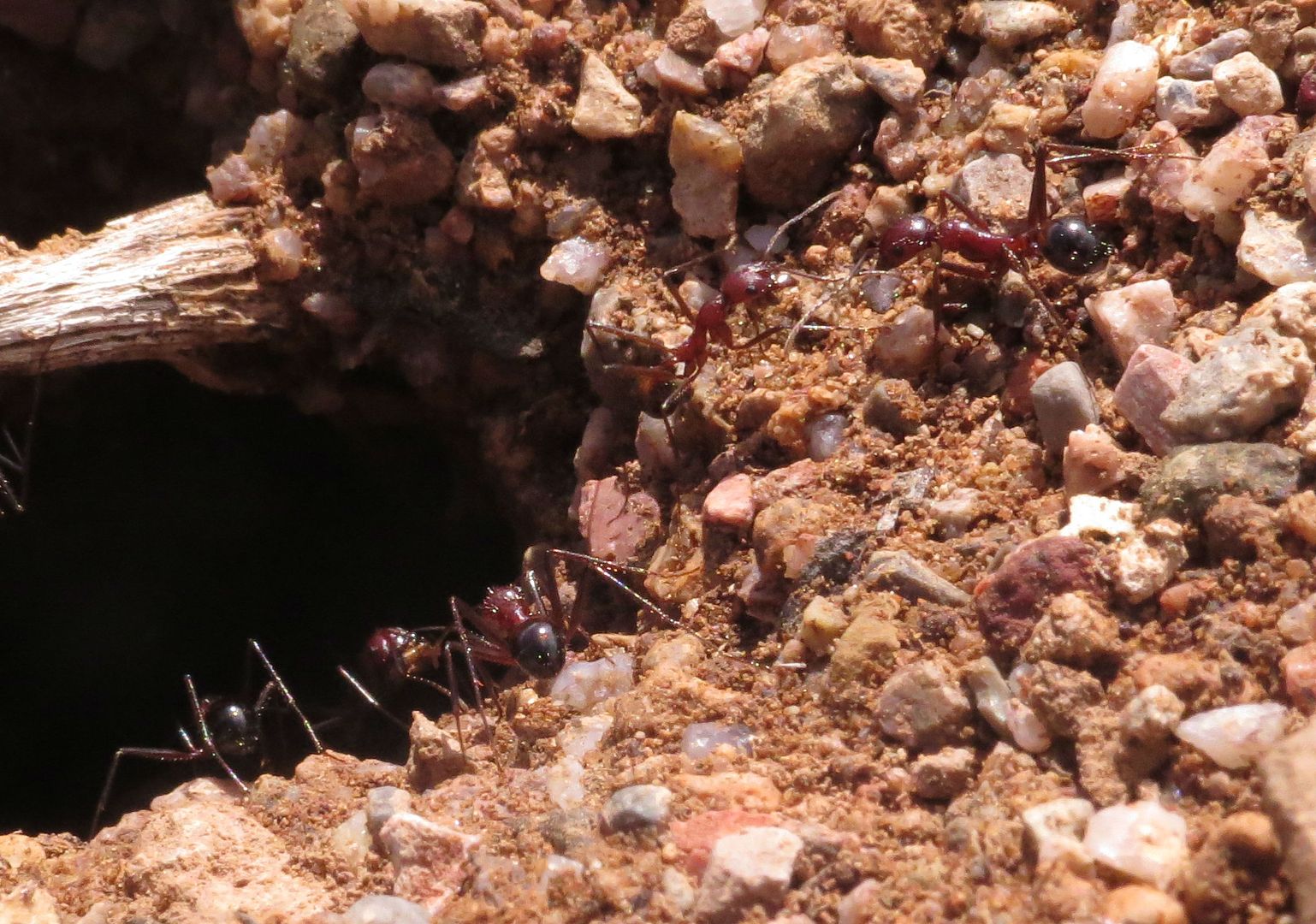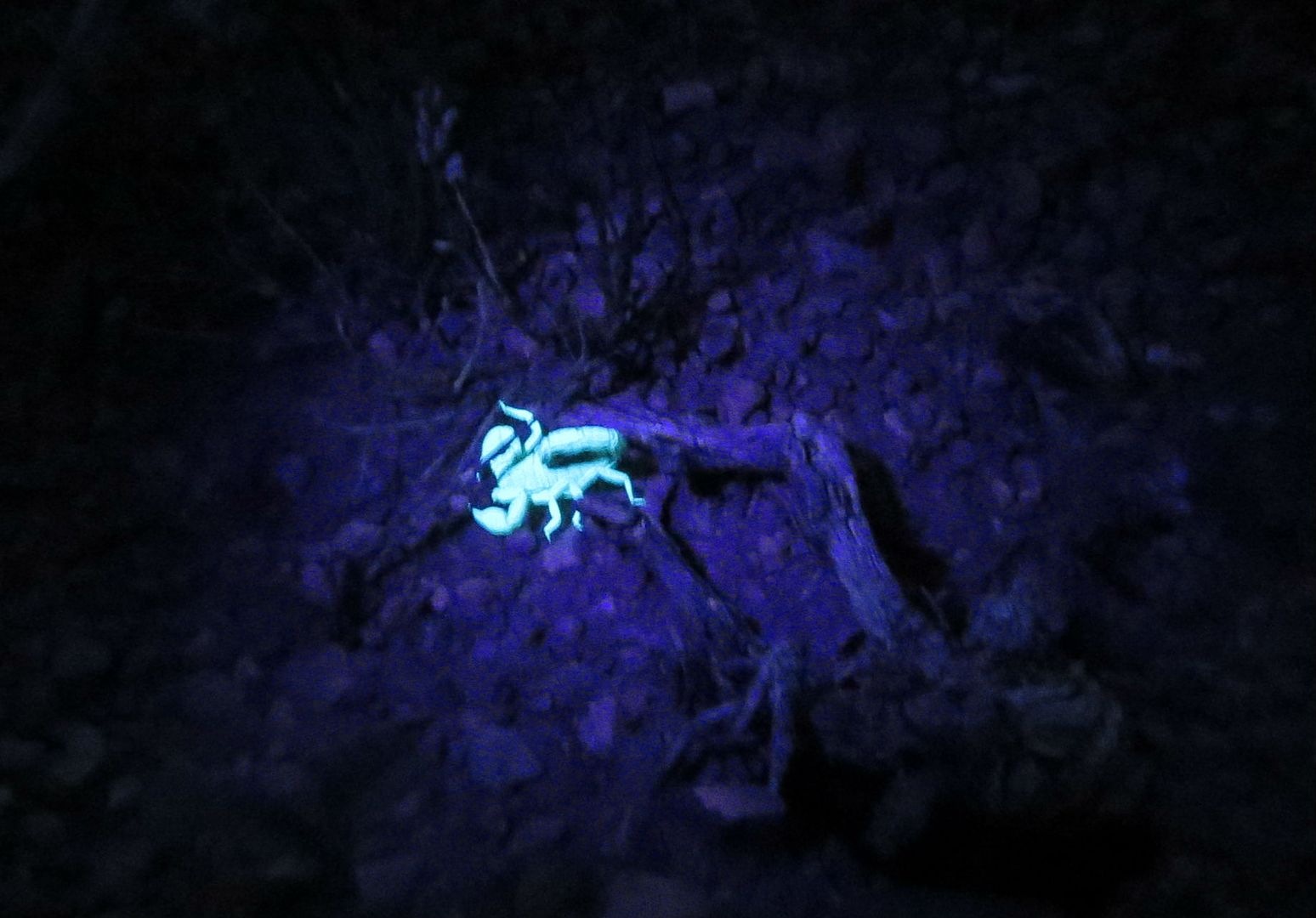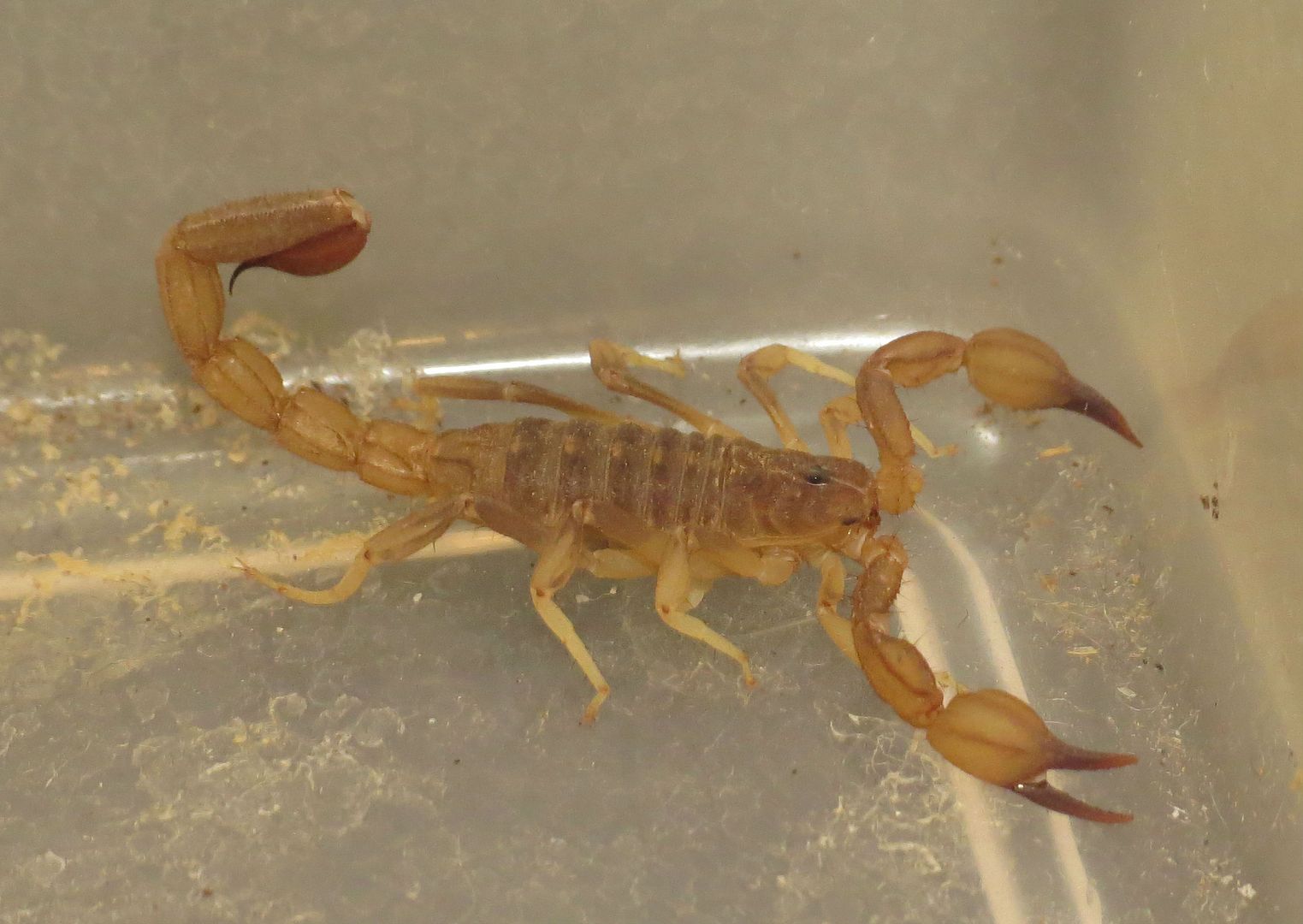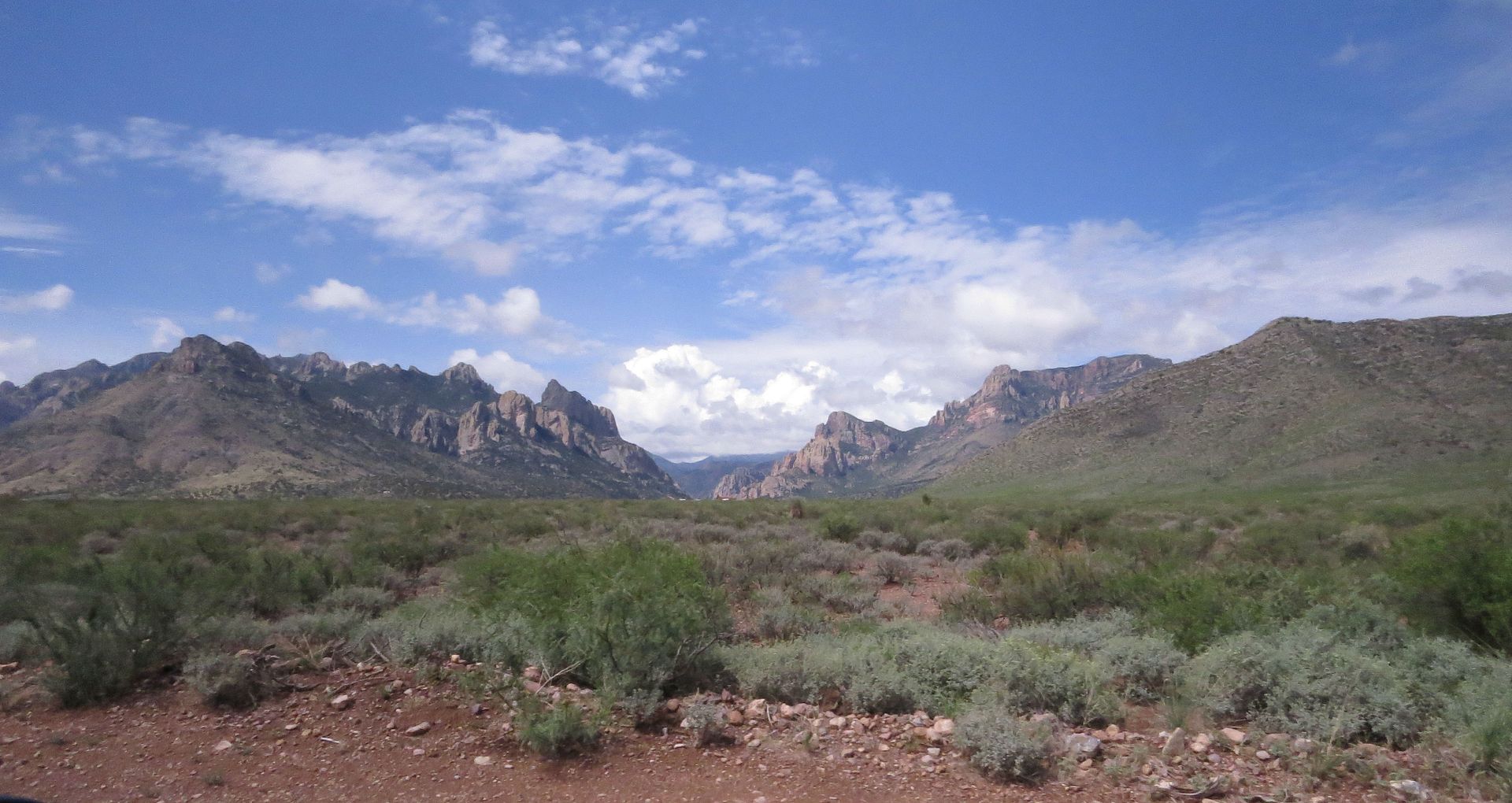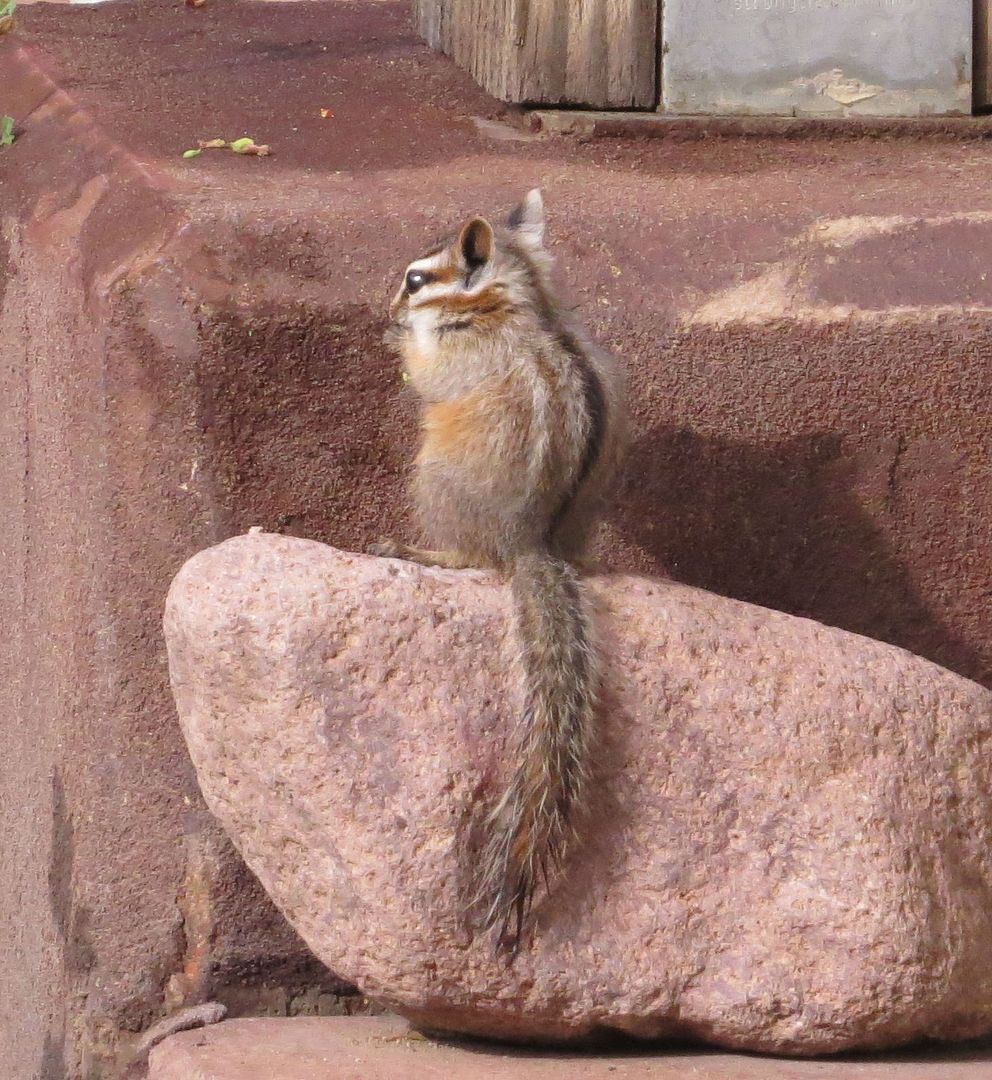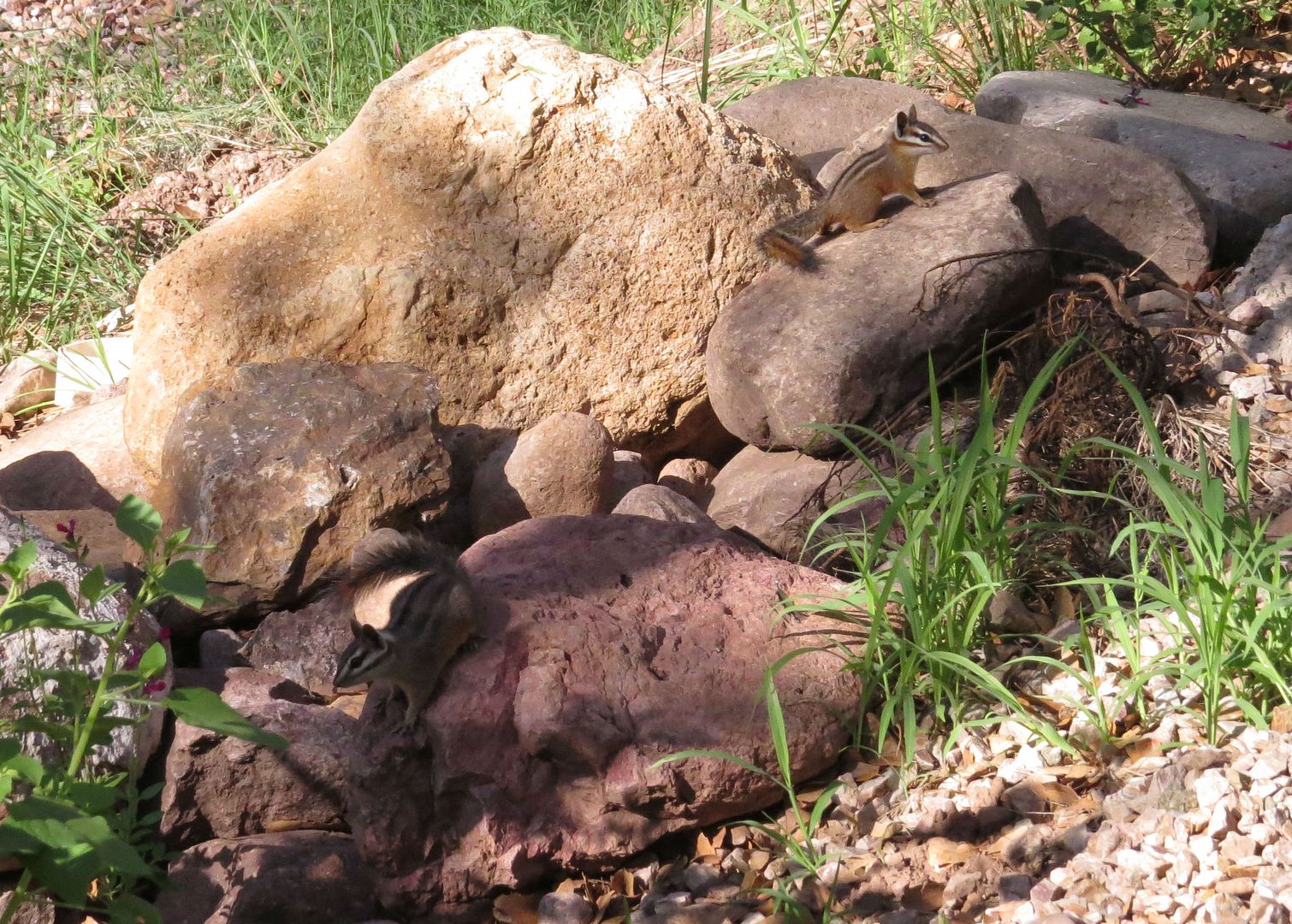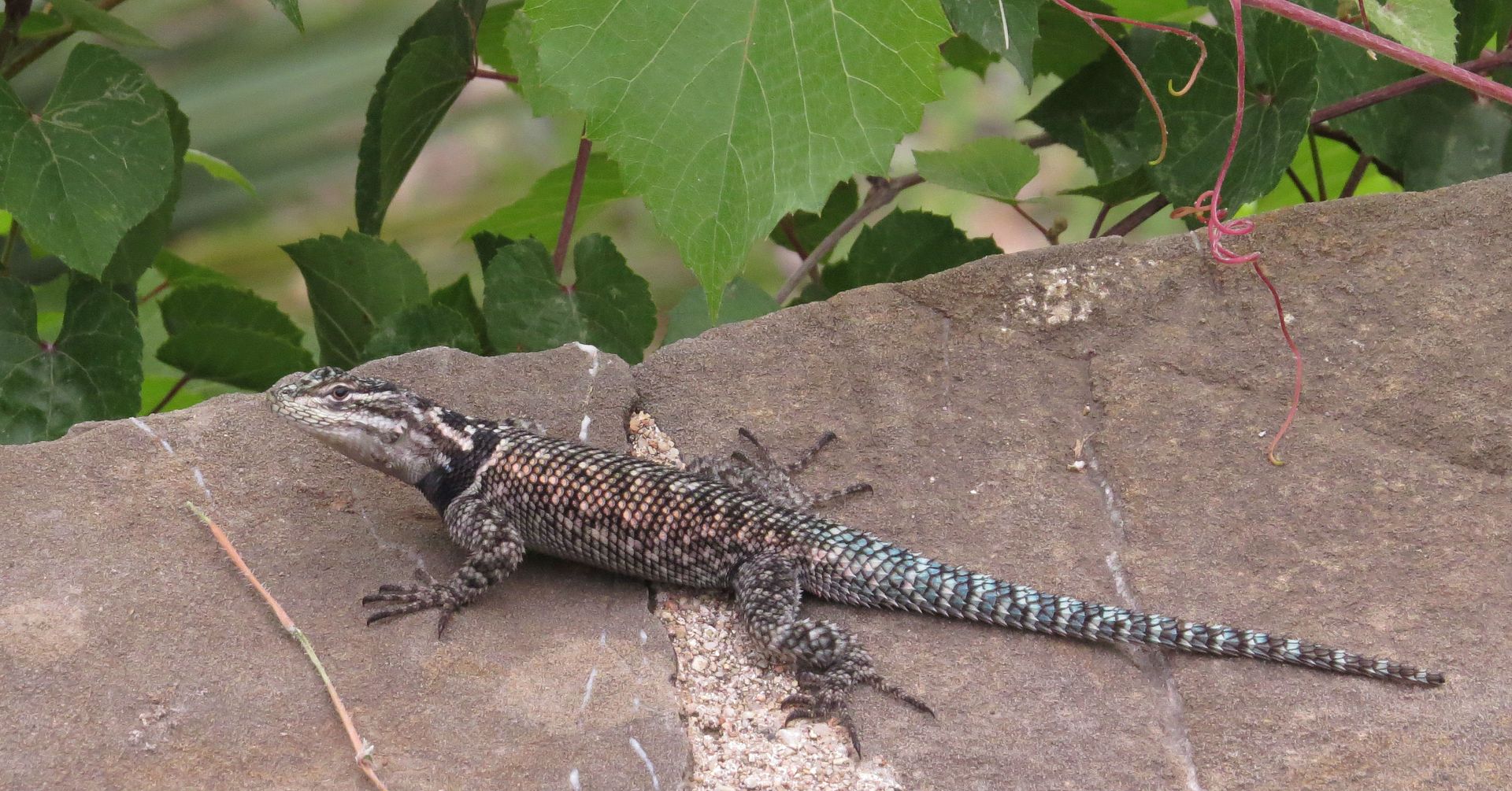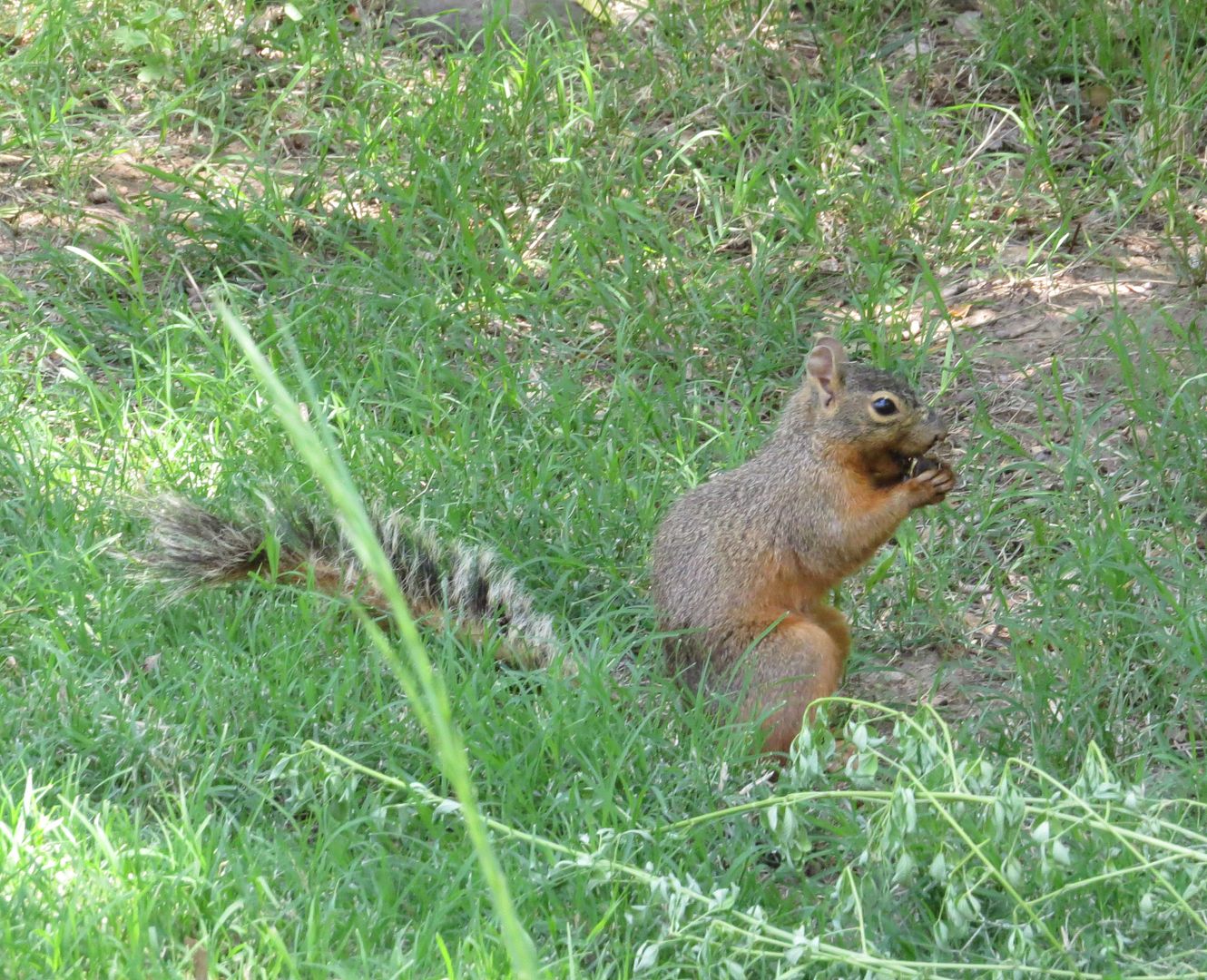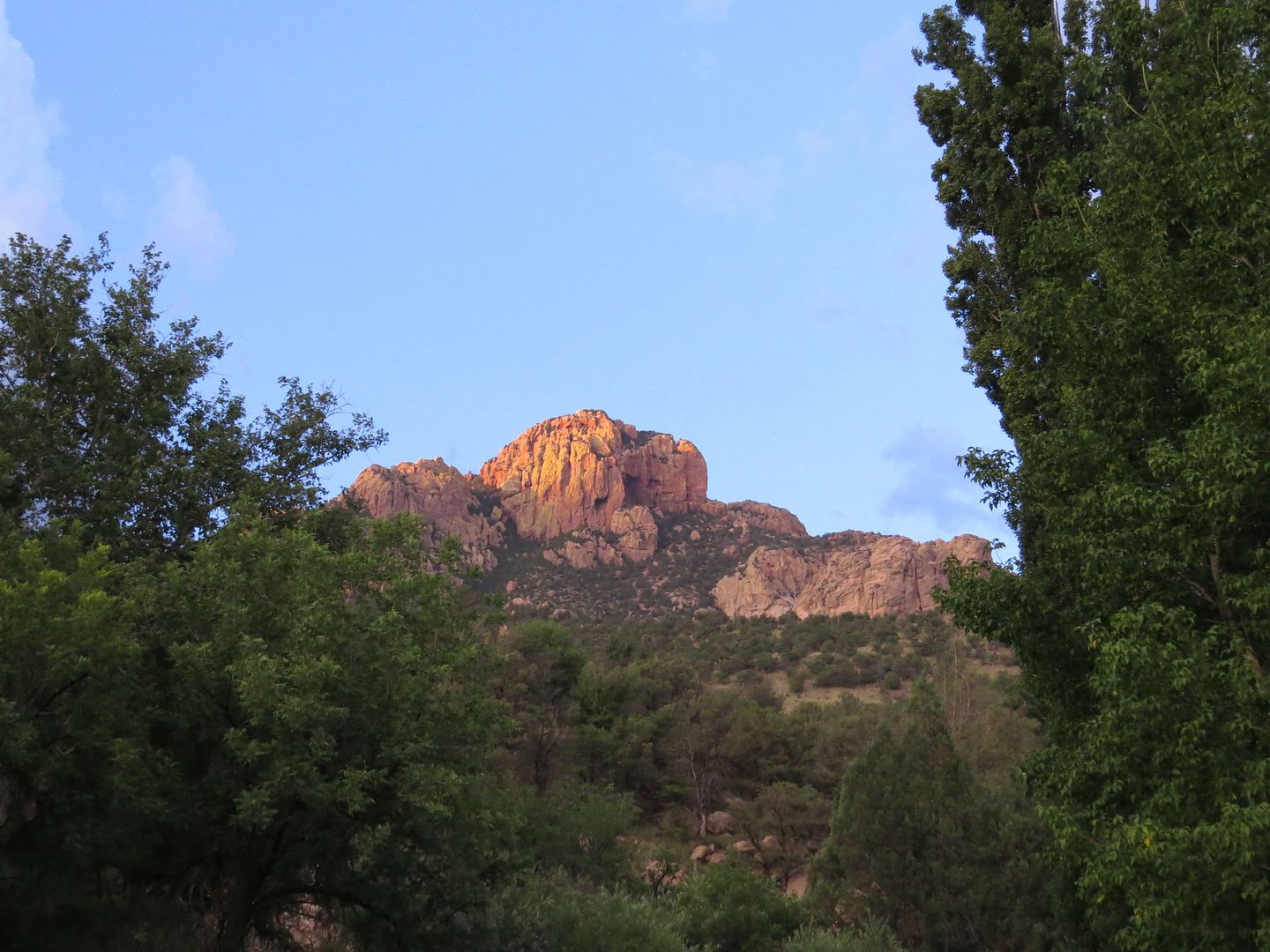Dorymyrmex, despite being a common genus, remains something of a mystery in North America. The trouble is that no one's really studied them well enough to get the genus right. Eastern species are fairly well known, but out west.... the genus is in pure chaos. Basically if it's black it keys out to Dorymyrmex insanus, and studies that look into the matter simply describe new species with a sentence or two.
The station we stayed at had loads of colonies of them on the property. We spent a day flagging each of them, and then putting sets of workers together to see if they got along or not.
Workers from the same colony got along, those from different one almost murdered on another on sight.
Though time consuming, it's fun work.
We found that the colonies had changed boundaries from the previous year, as well one of them had become massive in size (not in photo). Pictured above is a typical nest comprised of maybe 6 to 12 holes. The large colony crossed one of the trails here and was comprised of 26 holes.
We dug up one nest and found the general structure of one of their nests is simply one narrow tunnel leading down at a slight angle, leading through several galleries.
For time reasons we didn't get down below 3'. And it likely extends much deeper than that. Most of the ant nests in the area seem to go down 12' or so. How many queens they have, or if the ant hills are connected somehow underground are unknown. It's likely that these nests are not connected and there might be only one queen per hole, but also likely that in the winter the nests combine down into fewer holes. Perhaps queen number and or age help determine the number of satellite holes.
That was the extent of our study. Future courses may continue the work.
Friday, August 29, 2014
Thursday, August 28, 2014
Arizona: Army Ants
Neivamyrmex is the most abundant and diverse genus of army ants in North America.
There's a lot of assumptions when the public thinks of army ants, a lot of which are wrong. Army Ants have nomadic colonies, with one parent queen, and occasionally a few daughter queens. Colonies divide, unlike most ant species which send out thousands or millions of new queens to start up colonies on their won. They are specialized predators of other ant colonies which makes their hunting habits mostly subterranean or roaming through leaf litter where they're hardly seen.
Most Documentaries like to show the genera Eciton from South America, or Dorylus from Madagascar. And odd ball species of their respected genera at that. Cameramen like to focus on the specific species that raid for other insects more so than ant colonies, which is not the norm compared to other species in their genera. This surface raiding makes for good TV, but leads one to believe it to be the norm.
The nomadic lifestyle means they make nests virtually anywhere they can fit. Here a colony took up at least 25 rocks lining a hillside, and they had excavated tunnels deep into the adjacent soil media. Their own brood was spread out all over and there was a single raiding line leaving to raid ant nests as food.
We collected several hundred of the workers and brood for a laboratory setup. A simple plastic container lined with Fluon, a substance which ants can't climb up.
They quickly brought all the brood into the bivouacs, nests formed of the ants themselves. There was on central one that had about 80% of the ants and brood, with smaller ones in each corner of the setup. What was neat was in the morning and afternoon they formed raiding lines to connect each bivouac together and these smaller ones were dissolved as needed. Feeding them the brood from other ant colonies put more ants to work and the corner gatherings vanished completely while they gathered up the brood.
The brood was mostly kept in the dark, protected by the ants themselves. The main bivouac was around a small tube of water.
It was neat staring into the mass of ants. Blowing on them would result in a flurry of activity.
While they ran about the container, the brood became visible.
Army Ants are mostly blind. This species in particular, Neivamyrmex nigrescens, has only one eye facet. Meaning they can pretty much tell when it's light and dark out but little else. Their antennae are constantly probing the air for odors that don't belong.
Surprisingly we found Army Ants out in the desert too. It's likely the nest was that of an existing ant colony they had raided.
This species was much much smaller than the ones we had found by the station and up in the mountains some.
A lot of Army Ant identification hinges on whether one particular grove between the mesonotum and pronotum (on the thorax, in front of the front legs) wraps around the sides and top of the ant completely, or whether it dissolves or smooths out somewhat along the way. It's not a great feature, I know because Gordon Snelling came up with the key, and was standing next to me when he said he wasn't happy with that one particular question in his key. But this is one of those features that separates a few species from several others. Perhaps it's more pronounced in certain worker castes?
A lot of species of Army Ants are known to exists by their males. Male Army Ants fly off from the colonies at certain times of the year with the intention of being captured by anther Army Ant colony of their own species. Assuming the colony has virgin queens that need mating with, they collect him into the nest where he inseminates one of them. The problem is, these male ants were known only by showing up at lights at night and many of them look identical.
Male ants in general are difficult to identify. Because they're a breeding caste that colonies produce only at a certain time of year for that purpose. Evolution hasn't been kind to them either, especially compared to the worker and queen castes.
Army Ant males are identified mostly by dissecting the abdomen and observing the shape of their genitals. So scientists knew several species from the males they were collecting at lights but hadn't been able to match them up to what workers they belong to. This is something Gordon Snelling and his father helped clear up.
We dumped a few of them onto a colony of Myrmecocystus (honeypot ants) hoping to see a specific reaction. In response to Army Ants raiding a colony, many ant species out right abandon their nests queen and all in the hopes to regroup elsewhere. It didn't work, perhaps because Myrmecocystus have a lot to lose from abandoning their repletes (honeypots).
Army Ants are unusual in that the adults can consume solid food. Most ants can't do this.
We fed the lab colony the brood to a while colony when we saw, sadly, they had started cannibalizing their own brood.
There's a lot of assumptions when the public thinks of army ants, a lot of which are wrong. Army Ants have nomadic colonies, with one parent queen, and occasionally a few daughter queens. Colonies divide, unlike most ant species which send out thousands or millions of new queens to start up colonies on their won. They are specialized predators of other ant colonies which makes their hunting habits mostly subterranean or roaming through leaf litter where they're hardly seen.
Most Documentaries like to show the genera Eciton from South America, or Dorylus from Madagascar. And odd ball species of their respected genera at that. Cameramen like to focus on the specific species that raid for other insects more so than ant colonies, which is not the norm compared to other species in their genera. This surface raiding makes for good TV, but leads one to believe it to be the norm.
The nomadic lifestyle means they make nests virtually anywhere they can fit. Here a colony took up at least 25 rocks lining a hillside, and they had excavated tunnels deep into the adjacent soil media. Their own brood was spread out all over and there was a single raiding line leaving to raid ant nests as food.
We collected several hundred of the workers and brood for a laboratory setup. A simple plastic container lined with Fluon, a substance which ants can't climb up.
They quickly brought all the brood into the bivouacs, nests formed of the ants themselves. There was on central one that had about 80% of the ants and brood, with smaller ones in each corner of the setup. What was neat was in the morning and afternoon they formed raiding lines to connect each bivouac together and these smaller ones were dissolved as needed. Feeding them the brood from other ant colonies put more ants to work and the corner gatherings vanished completely while they gathered up the brood.
The brood was mostly kept in the dark, protected by the ants themselves. The main bivouac was around a small tube of water.
It was neat staring into the mass of ants. Blowing on them would result in a flurry of activity.
While they ran about the container, the brood became visible.
Army Ants are mostly blind. This species in particular, Neivamyrmex nigrescens, has only one eye facet. Meaning they can pretty much tell when it's light and dark out but little else. Their antennae are constantly probing the air for odors that don't belong.
Surprisingly we found Army Ants out in the desert too. It's likely the nest was that of an existing ant colony they had raided.
This species was much much smaller than the ones we had found by the station and up in the mountains some.
A lot of Army Ant identification hinges on whether one particular grove between the mesonotum and pronotum (on the thorax, in front of the front legs) wraps around the sides and top of the ant completely, or whether it dissolves or smooths out somewhat along the way. It's not a great feature, I know because Gordon Snelling came up with the key, and was standing next to me when he said he wasn't happy with that one particular question in his key. But this is one of those features that separates a few species from several others. Perhaps it's more pronounced in certain worker castes?
A lot of species of Army Ants are known to exists by their males. Male Army Ants fly off from the colonies at certain times of the year with the intention of being captured by anther Army Ant colony of their own species. Assuming the colony has virgin queens that need mating with, they collect him into the nest where he inseminates one of them. The problem is, these male ants were known only by showing up at lights at night and many of them look identical.
Male ants in general are difficult to identify. Because they're a breeding caste that colonies produce only at a certain time of year for that purpose. Evolution hasn't been kind to them either, especially compared to the worker and queen castes.
Army Ant males are identified mostly by dissecting the abdomen and observing the shape of their genitals. So scientists knew several species from the males they were collecting at lights but hadn't been able to match them up to what workers they belong to. This is something Gordon Snelling and his father helped clear up.
We dumped a few of them onto a colony of Myrmecocystus (honeypot ants) hoping to see a specific reaction. In response to Army Ants raiding a colony, many ant species out right abandon their nests queen and all in the hopes to regroup elsewhere. It didn't work, perhaps because Myrmecocystus have a lot to lose from abandoning their repletes (honeypots).
Army Ants are unusual in that the adults can consume solid food. Most ants can't do this.
We fed the lab colony the brood to a while colony when we saw, sadly, they had started cannibalizing their own brood.
Friday, August 22, 2014
Arizona Desert Aphaenogaster
Plant life of the Chihuahuan Desert is almost like something out of a Dr. Seuss book. There's surprisingly little cacti here besides Prickly Pears and the very uncommon Barrel Cactus. Instead there are lots of these plants I can't ID. They are very tall with out stretched stems, like a series of V's, and while covered in leaves these hide some very sharp and evil-looking thorns.
Different minerals show up on different hills and their colors stand out. Limestone and Granite were common along the location of our desert anting expedition.
On one side of the road the limestone was so thick that it formed huge sheets of stone, impenetrable to dig through besides the bits of pebbles and stone caught between their sides. Granite pebbles were more common on the other side and much easier to dig through.
Creosote, Larrea tridentata, is the dominant flowering plant of the area. There were a good deal of Honey pot ant nests here but those will wait for another post.
A misconception about deserts is that they are empty and lifeless waste lands of sand. But this is mostly untrue. Anywhere on earth that gets rain can support some sort of plant life, even if it's only a series of short lived annuals. Here several inches of rain are common as well as what washes down from the mountains through creeks and "washes" as they're called. There is almost no grass, at least not the thin narrow leaved kind one associates with lawns or prairies. It's mostly short shrubs spaced out with small toughed plants interspersed between. This environment makes anting almost ideal because one can very easily view the activity happening on the ground, and map out territories.
One of the things we were warned about was finding random containers, clothing, and backpacks in plane sight or hidden.
These effects are one of three things: The belonging of immigrants who didn't make it across the boarder (something like 800 people die every year trying to make the crossing). Water bottles hidden by the locals to help immigrants make the crossing, which they're not supposed to do, but it's the unfortunate answer to the problem of finding people dying of thirst on their property. And lastly, drug trafficking. They actually told us to simply ignore this, ignore people, ignore the things we find. Report it to someone later on but when finding the item, don't do anything. Don't take pictures of it (as I did above) because if it is drugs and you're viewed taking photos of their location these people might come after you.

Instead we were supposed to pay attention to other things... like this desert lichen.
After rainfall the desert worms comes out and crawl all over.
The millipedes out there are enormous. But as the instructors liked to point out, "That's a small one," despite it being longer than my fingers.
Also out was this Grub. I honestly forget what it was exactly, though we ID'd it in class. The grub form to this species of beetle is a specialized predator of giant millipedes.
And of course also out and about were the ants.
There were two main species of Aphaenogaster and both seem to live the same way. They build a series of different nests, or perhaps it's the same nest with multiple large hill entrances over the course of a few meters.
Aphaenogaster cockerelli and Aphaenogaster albisetosa are two very similar species. A. cockerelli have curved spines, while A. albisetosa have more erect spines. They are otherwise very similar looking and can have multiple color patterns depending on where the population was found.
While active in the day, they are rampaging at night. This is when they move their nest about. They seem to dig out new locations and possibly in advance of the move, and possibly connect the new location with the old by underground tunnels. They maintain three to five of these locations as their own, and abandon or add some as needed. This behavior of setting up satellite colonies is a defense against Army Ants, which are specialized predators of other ant colonies, and always attack underground.
Despite the huge size of the Aphaenogaster colonies here, my understanding is that they'll evacuate the nest at the first sign of invasion.
They gather stones of a specific size and place them all around the entrances of their nests. The reason for this is because of another genus of ant, Dorymyrmex, which are the annoying assholes of the ant world. Before sunrise, Dories will run to rival ant colonies and close up with dirt and debris. But they only do this if there's dirt around the entrance within a certain distance, otherwise it's not worth it for them to keep spilling dirt into the entrance at all. This kind of harassment continues for as long as they can, sometimes preventing the rival colony from doing most of their foraging for the whole day. So a lot of the desert ants will put these stones, which are just big enough for the Dories to not be able to lift, and this patch of stones usually extends 12" or more all around the entrance. Meaning if the Dories want to try and throw dirt down the enemy hill, they have to wonder 12" to locate the hole and then venture 12" back to find dirt, and then back again to drop it in the entrance. Now the Aphaenogaster, Pogonomyrmex (Harvester), or Myrmecocystus (Honeypot) workers simply needs to remove the dirt, so it becomes a question of who has more ants. Colonies that don't have these stones, or the stones were washed away or buried in the dirt from rain, have a harder time fending off the Dorymyrmex harassment because the Dories have less to walk, and can essentially push the dirt into the hole.
While observing a nest I noticed a scorpion right at the entrance. It was a very tiny one, as I learned pretty much all scorpions are out there, at only two ant lengths. The ants themselves didn't bother with it, in fact they walked over it as if it wasn't there. Shining a black light on them makes them glow in the dark and significantly easier to see against the pebbled soil.
This scorpion species is of some interest scientifically, because no one knows what the relationship is here. Are they too lazy to dig their own burrows? Is it just the females using the ant nests? Does it eat the ant brood? Does it eat the ants? Does it reproduce inside the ant nest? All of these are questions that no one knows the answer to.
So upon finding the one we were immediately told to catch it... and I replied "Aren't the little ones deadly?"
The response I got wasn't all that encouraging but I'm under the impression that it's like a bee sting. You have to be allergic to the venom for it to be serious. There is the Bark Scorpion is another story but they weren't reported in the area.
Deep within the Aphaenogaster nest there is a single egg laying queen. She has a more developed gaster (abdomen) and retains the thick thorax which housed her wing muscles when she flew off for her nuptial flight to start the colony.
Aphaenogaster become one of the more dominant foragers at night and occasional skirmishes happen among the more predatory insects. Here a Pseudo-scorpion has found a dead grasshopper which an Aphaenogaster test the waters to see if recruiting more workers could steal the prize away. The Pseudo-scorpion won in this case as it dragged the grasshopper out of the colony's range.
Different minerals show up on different hills and their colors stand out. Limestone and Granite were common along the location of our desert anting expedition.
On one side of the road the limestone was so thick that it formed huge sheets of stone, impenetrable to dig through besides the bits of pebbles and stone caught between their sides. Granite pebbles were more common on the other side and much easier to dig through.
Creosote, Larrea tridentata, is the dominant flowering plant of the area. There were a good deal of Honey pot ant nests here but those will wait for another post.
A misconception about deserts is that they are empty and lifeless waste lands of sand. But this is mostly untrue. Anywhere on earth that gets rain can support some sort of plant life, even if it's only a series of short lived annuals. Here several inches of rain are common as well as what washes down from the mountains through creeks and "washes" as they're called. There is almost no grass, at least not the thin narrow leaved kind one associates with lawns or prairies. It's mostly short shrubs spaced out with small toughed plants interspersed between. This environment makes anting almost ideal because one can very easily view the activity happening on the ground, and map out territories.
One of the things we were warned about was finding random containers, clothing, and backpacks in plane sight or hidden.
These effects are one of three things: The belonging of immigrants who didn't make it across the boarder (something like 800 people die every year trying to make the crossing). Water bottles hidden by the locals to help immigrants make the crossing, which they're not supposed to do, but it's the unfortunate answer to the problem of finding people dying of thirst on their property. And lastly, drug trafficking. They actually told us to simply ignore this, ignore people, ignore the things we find. Report it to someone later on but when finding the item, don't do anything. Don't take pictures of it (as I did above) because if it is drugs and you're viewed taking photos of their location these people might come after you.

Instead we were supposed to pay attention to other things... like this desert lichen.
The millipedes out there are enormous. But as the instructors liked to point out, "That's a small one," despite it being longer than my fingers.
Also out was this Grub. I honestly forget what it was exactly, though we ID'd it in class. The grub form to this species of beetle is a specialized predator of giant millipedes.
And of course also out and about were the ants.
There were two main species of Aphaenogaster and both seem to live the same way. They build a series of different nests, or perhaps it's the same nest with multiple large hill entrances over the course of a few meters.
Aphaenogaster cockerelli and Aphaenogaster albisetosa are two very similar species. A. cockerelli have curved spines, while A. albisetosa have more erect spines. They are otherwise very similar looking and can have multiple color patterns depending on where the population was found.
While active in the day, they are rampaging at night. This is when they move their nest about. They seem to dig out new locations and possibly in advance of the move, and possibly connect the new location with the old by underground tunnels. They maintain three to five of these locations as their own, and abandon or add some as needed. This behavior of setting up satellite colonies is a defense against Army Ants, which are specialized predators of other ant colonies, and always attack underground.
Despite the huge size of the Aphaenogaster colonies here, my understanding is that they'll evacuate the nest at the first sign of invasion.
They gather stones of a specific size and place them all around the entrances of their nests. The reason for this is because of another genus of ant, Dorymyrmex, which are the annoying assholes of the ant world. Before sunrise, Dories will run to rival ant colonies and close up with dirt and debris. But they only do this if there's dirt around the entrance within a certain distance, otherwise it's not worth it for them to keep spilling dirt into the entrance at all. This kind of harassment continues for as long as they can, sometimes preventing the rival colony from doing most of their foraging for the whole day. So a lot of the desert ants will put these stones, which are just big enough for the Dories to not be able to lift, and this patch of stones usually extends 12" or more all around the entrance. Meaning if the Dories want to try and throw dirt down the enemy hill, they have to wonder 12" to locate the hole and then venture 12" back to find dirt, and then back again to drop it in the entrance. Now the Aphaenogaster, Pogonomyrmex (Harvester), or Myrmecocystus (Honeypot) workers simply needs to remove the dirt, so it becomes a question of who has more ants. Colonies that don't have these stones, or the stones were washed away or buried in the dirt from rain, have a harder time fending off the Dorymyrmex harassment because the Dories have less to walk, and can essentially push the dirt into the hole.
While observing a nest I noticed a scorpion right at the entrance. It was a very tiny one, as I learned pretty much all scorpions are out there, at only two ant lengths. The ants themselves didn't bother with it, in fact they walked over it as if it wasn't there. Shining a black light on them makes them glow in the dark and significantly easier to see against the pebbled soil.
This scorpion species is of some interest scientifically, because no one knows what the relationship is here. Are they too lazy to dig their own burrows? Is it just the females using the ant nests? Does it eat the ant brood? Does it eat the ants? Does it reproduce inside the ant nest? All of these are questions that no one knows the answer to.
So upon finding the one we were immediately told to catch it... and I replied "Aren't the little ones deadly?"
The response I got wasn't all that encouraging but I'm under the impression that it's like a bee sting. You have to be allergic to the venom for it to be serious. There is the Bark Scorpion is another story but they weren't reported in the area.
Deep within the Aphaenogaster nest there is a single egg laying queen. She has a more developed gaster (abdomen) and retains the thick thorax which housed her wing muscles when she flew off for her nuptial flight to start the colony.
Aphaenogaster become one of the more dominant foragers at night and occasional skirmishes happen among the more predatory insects. Here a Pseudo-scorpion has found a dead grasshopper which an Aphaenogaster test the waters to see if recruiting more workers could steal the prize away. The Pseudo-scorpion won in this case as it dragged the grasshopper out of the colony's range.
Thursday, August 14, 2014
Ants of the Southwest
Late last month I set out on a journey to attend Ants of the Southwest, a wonderful entomological course that is extremely underrated in comparison to Ant Course.
For those not in the know, Ant Course is geared towards Grad Students with a focus on Ant Taxonomy (identifying and classifying ants). Ant Course moves each year, (two years outside the US, one year in Arizona) so foreign students that might have trouble getting into the US can attend.
Ants of the Southwest is a toned down version of Ant Course with a more flexible schedule. There's more emphasis on ecology and finding ants in an array of different environments.
This was the first time I'd ever flown anywhere. Which was an adventure enough on its own. Being an overachiever I made the mistake of trying to arrive a day early. Also I didn't know that air line tickets are printed in the local time. So I assumed I'd land at 5:00pm instead of 8:00 as it was printed on my ticket. And then there's the two hour drive from the Tucson Air Port. So I was driving through the middle of nowhere in complete darkness instead of just getting a hotel and driving there the next morning like I should have.
Do yourself a favor and just plan to arrive the morning of. Otherwise you'll be missing this! Lush desert vistas and mountains as far as the eye can see. Don't be swayed in by the idea of "Seeing the night sky without any light pollution." All photos that show the Milky Way and millions of stars in the night sky are the result of over exposure. Sure you will see a lot more stars than normal, I even saw a shooting star, but the experience doesn't live up to the photos.
So why hold this thing out in the middle of nowhere? Because it's an ideal location. The Chihuahuan Desert (as seen above) meets with the Sonoran Desert (which is full of more cacti). There's an abundance of mountains in the area, so there's a lot of different elevations and micro-climates. Storms are constantly passing through at that time of year, and you can actually which hills in the desert have received more or less rainfall from how green or brown they look. It's the northern most point that a lot of tropical species make, as well the southern most point that temperate species travel to or migrate through. So there's a lot of overlap here that all attributes to species richness.
There is a sign or two, but they don't face both ways. This is another reason to find the place during the day.
Upon arrival, it's very apparent that there's a lot more animal life here than in New Jersey.
Varmints run around the station like they own the place.
An assortment of lizards too.
There are droves and droves of them running around the place.
Even the squirrels down there are different. Their tails are shaggier, they're slightly bigger, and one started thudding its tail at me when I got too close.
So in the weeks to come, I'll be posting about my trip to Arizona.
For those not in the know, Ant Course is geared towards Grad Students with a focus on Ant Taxonomy (identifying and classifying ants). Ant Course moves each year, (two years outside the US, one year in Arizona) so foreign students that might have trouble getting into the US can attend.
Ants of the Southwest is a toned down version of Ant Course with a more flexible schedule. There's more emphasis on ecology and finding ants in an array of different environments.
This was the first time I'd ever flown anywhere. Which was an adventure enough on its own. Being an overachiever I made the mistake of trying to arrive a day early. Also I didn't know that air line tickets are printed in the local time. So I assumed I'd land at 5:00pm instead of 8:00 as it was printed on my ticket. And then there's the two hour drive from the Tucson Air Port. So I was driving through the middle of nowhere in complete darkness instead of just getting a hotel and driving there the next morning like I should have.
Do yourself a favor and just plan to arrive the morning of. Otherwise you'll be missing this! Lush desert vistas and mountains as far as the eye can see. Don't be swayed in by the idea of "Seeing the night sky without any light pollution." All photos that show the Milky Way and millions of stars in the night sky are the result of over exposure. Sure you will see a lot more stars than normal, I even saw a shooting star, but the experience doesn't live up to the photos.
So why hold this thing out in the middle of nowhere? Because it's an ideal location. The Chihuahuan Desert (as seen above) meets with the Sonoran Desert (which is full of more cacti). There's an abundance of mountains in the area, so there's a lot of different elevations and micro-climates. Storms are constantly passing through at that time of year, and you can actually which hills in the desert have received more or less rainfall from how green or brown they look. It's the northern most point that a lot of tropical species make, as well the southern most point that temperate species travel to or migrate through. So there's a lot of overlap here that all attributes to species richness.
On the topic of "monsoons" I have to say I wasn't really impressed with them. I come from New Jersey and we have four seasons in a year, but down there, because it's tropical, they have the wet season and the dry season. Maybe monsoons are worse in wetter areas but a tropical desert isn't very wet. Actually there was only one day I was there where we got 2 inches of rain, 1/4th of what they had gotten that year all in one night. Dirt roads, and dry "washes" in the desert, would suddenly become raging rivers.
There is a paved road that takes you right up to just before the South Western Research Station. Sadly it does turn into a dirt road for the last five minutes and if it's rained it can be an issue pulling into the station, due to a creek that normally runs completely dry suddenly rushing with water.
There is a sign or two, but they don't face both ways. This is another reason to find the place during the day.
Upon arrival, it's very apparent that there's a lot more animal life here than in New Jersey.
Varmints run around the station like they own the place.
An assortment of lizards too.
There are droves and droves of them running around the place.
Even the squirrels down there are different. Their tails are shaggier, they're slightly bigger, and one started thudding its tail at me when I got too close.
So in the weeks to come, I'll be posting about my trip to Arizona.
Subscribe to:
Posts (Atom)











